
www.therecord.com.au

PERTH MASS COUNT: parishes begin participating this weekend Page 2
A RECORD SPECIAL REPORT

In southern China a small group of religious sisters and Jesuit priests centred around a remarkable man,
FR LUIS RUIZ SJ, care for those who have no-one else to care for them. In the 100-plus rudimentary leprosariums they have established and the more-recently opened orphanage for children who have lost their parents to HIV/AIDS, their suffering Chinese brothers and sisters find......
Thursday May ,
Perth, Western Australia ● $1 Western Australia’s Award-winning Catholic newspaper
SAINTLY WOMAN: The hunt is on for the real Mary Magdalene Page 13
SLOWDOWN? More rigour in choosing saints is needed: Pope Page 12




Oasis of Love
A HUMAN TRAGEDY

A

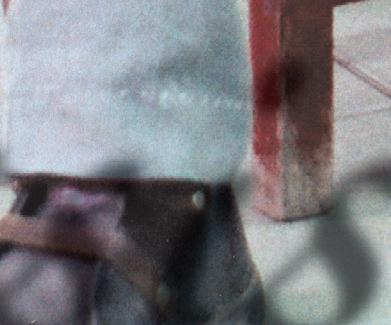






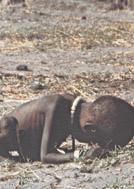




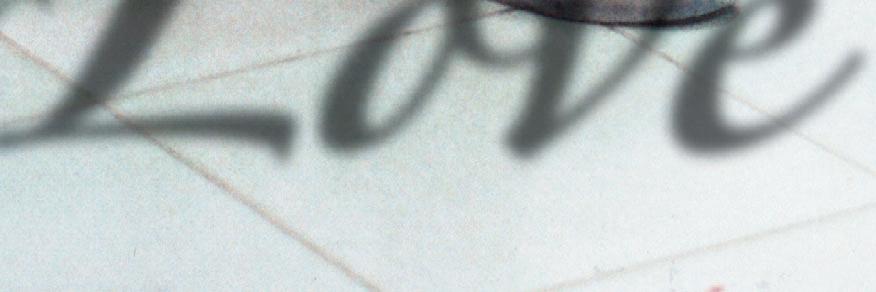



photographer snaps a dying girl and walks away. He wins the Pulitzer Prize. Later,
In the outrage that
who is at fault? Page 14 INDEX Editorial/Letters - Pages 4-5 Perth news - Pages 2-3 The World - Pages 12-13 I say, I say - Page 14 Classifieds - Page 15
he kills himself.
follows the story,
that 30 or 40 years ago The Da Vinci Code probably wouldn’t sell. But today people know less history - and believe more myth. Story: Page 3, Lecture details: Page 16
PERTH
DA
VINCI CODE TALK
Renaissance art expert, Dr Kate Challis, says
The Parish. The Nation. The World.
An r e p o r t s b y D e r e k B o y l e n a n d J a m i e O ’ B r i e n
Photo: Derek Boylen
reports by Derek Boylen and Jamie O’Brien
The Chinese character for ‘Love’
Parishes to start Mass count
Perth parishes and community chapels are this weekend taking part in a national count of Mass attenders.
The count, taken across the four weekends in May, is being conducted by the Australian Bishops Conference
The bishops say that church attendance is perhaps the most basic measure of religious practice and while many dioceses and parishes already conduct periodic counts, there is rarely a universal count in all places on the same days.
The first national attendance count was conducted in 2001. Each count is timed to occur in a Commonwealth Census year so that the results can be measured against the Catholic population statistics that will emerge from the Census to be held in August this year.
The 2001 count showed that 765,300 people attended Mass on a typical May weekend. This represented about 16% of the Australian Catholic population.
In Perth archdiocese 59,300 was a typical weekend attendance, similarly about 16% of the archdiocesan Catholic population.
The variable was a low of 57,150 on May 6 and a high of 60,950 on May 27.
Church commentators tend to the view that many average Catholics may not be attending every Sunday, hence the surges as well as the overflow Christmas and Easter attendances.
Perth archdiocese later this year will conduct its own five yearly
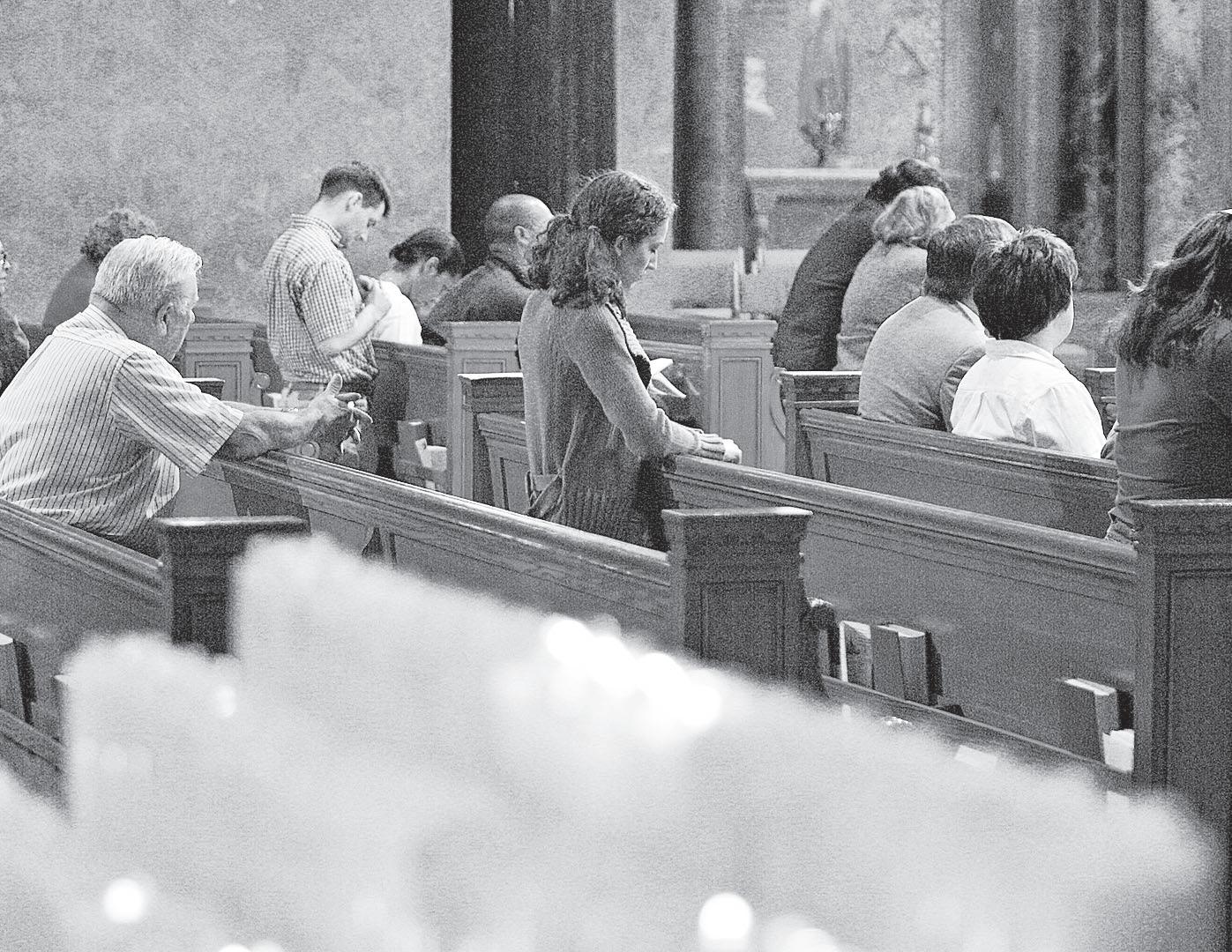
Mass attendance census on an ordinary weekend in December and a Christmas count which reveals the maximum attendance in the year. The 2001 count also revealed the changing ethnic face of Catholic Australia. One in fifteen heard Mass
in a language other than English – 31 languages in all.
The national count is a simple total and cannot indicate the gender or age breakdown of those attending. These details and projections can be gleaned only from



JAMIE
MARK
SYLVIA
PAUL
BRONWEN CLUNE (INTERNATIONAL)
OFFICE MANAGER
ADVERTISING
CHRIS MIZEN advertising@therecord.com.au
PRODUCTION MANAGER
DEREK BOYLEN production@therecord.com.au
587 Newcastle St, Leederville Post: PO Box 75, Leederville, WA 6902
Tel: (08) 9227 7080
Fax: (08) 9227 7087
The Record is a weekly publication distributed through parishes of the dioceses of Western Australia and by subscription.

the National Church Life Survey for which Catholic parishes are being asked to volunteer later this year. In the NCLS survey attenders are asked to complete a wide ranging survey of their faith, practice and social structures.
Theatre group makes DVD
The St Simon Peter Players have produced a DVD of their original musical “Let the Children Be” which was presented to big audiences on Friday and Saturday (two shows) before Easter.
Written by Gerald Searle and directed by June Allen, the play tells much of the story of Jesus on earth, with particular emphasis on his relationship with children.
The large cast of St Simon Peter parishioners included many young children, some of whom had significant speaking parts and performed excellently.
A highlight of the play, and of the DVD, is the original score of 11 songs and music composed by Thierry Venaille, Fran Beale and Patrick Laundy, and directed by Thierry Venaille. Their song version of the Beatitudes is particularly impressive.
It was the second major musical presented by the St Simon Peter Players, the first being “No Greater Love” based on the crucifixion and death of Jesus in 2003.
“Let the Children Be” was a polished and colourful performance, which translates well to the DVD.
The DVD is currently available from St Simon Peter parish at Ocean Reef, or can be ordered from Fran Beale on 9300 4516. The cost is $19.95, plus $5 postage.
Justice evening coming up at Floreat
An evening to hear and discuss issues of justice, equality, distribution of wealth and resources and fairness will be held at Floreat Parish Centre from 5pm to 8pm on Sunday May 14.
Sponsored by the Western Australian Vocation Network, the evening has been organised by Sr Anne Cullinane of the Archdiocesan Vocations Committee
Former Young Adult Development Officer Richard Mavros, who is currently serving on the Formation Team for the Edmund Rice Ministries, will talk about issues relating to the Make Poverty History Campaign.
For more information, contact Br Bernard White on 043 9948 981 or via bernard.white@westcourt.wa.edu.au
Correction – clergy change
Last week The Record reported that Fr Michael Merrifield was to be Priest in Charge of Our Lady of Lourdes Parish in Rockingham. This was incorrect.
Fr Merrifield is Parish Priest of St Bernadette’s Parish in Port Kennedy, as of April 15.
The Record apologises for any confusion.

Royal Perth Hospital Clinical Pastoral Education
Preparing chaplains and pastoral associates to provide spiritual and pastoral care within institutional contexts
We are now accepting applications for
●
●
●
●
Page 2 May 4 2006, The Record CRUISE • FLIGHT • TOUR Target your Personal service will target your dream Target your ® A division of Interworld Travel Pty Ltd Lic No.9TA796 Est 1981 200 ST.GEORGE’S TERRACE,PERTH,WA 6000 TEL 61+8+9322 2914 FAX 61+8+9322 2915 email:admin@flightworld.com.au www.flightworld.com.au Michael Deering Enquire about our Cashback Offer* * Conditions apply Why not stay at STORMANSTON HOUSE 27 McLaren Street, North Sydney Restful & secure accommodation operated by the Sisters of Mercy, North Sydney. Situated in the heart of North Sydney and short distance to the city Rooms available with ensuite facility Continental breakfast, tea/coffee making facilities & television Separate lounge/dining room, kitchen & laundry Private off-street parking Contact: Phone: 0418 650 661 or email: nsstorm@tpg.com.au VISITING SYDNEY A LIFE OF PRAYER ... are you called to the Benedictine life of divine praise and eucharistic prayer for the Church? Contact the: Rev Mother Cyril, OSB, Tyburn Priory, 325 Garfield Road, Riverstone, NSW 2765 www.tyburnconvent.org.uk TYBURN NUNS The Record The Parish. The Nation. The World. EDITOR PETER ROSENGREN Letters to: cathrec@iinet.net.au JOURNALISTS
O'BRIEN
jamieob@therecord.com.au
(PARISH/STATE)
REIDY reidyrec@iinet.net.au
DEFENDI sdefendi@iinet.net.au
GRAY
(NATIONAL) cathrec@iinet.net.au
clune@therecord.com.au
PENDING administration@therecord.com.au inc.
sales/subscriptions
programs in 2006
Internships commencing June
November 10
7 -
Winter CPE Quarter June 7 - August 11
Spring CPE Quarter August 28 - November 10
Summer CPE Quarter November 27, 2006 - February 2, 2007 Details from: Director of Clinical Pastoral Education Centre for Pastoral Care and CPE Royal Perth Hospital PO Box Y3137 East St George’s Terrace PERTH 6832 WA Telephone: (08) 9224 2482
Counting the numbers: Perth Catholic parishes will begin participation in the national count of Mass attenders. In December the archdiocese will conduct its own five-yearly count.
Photo: CNS
‘Evidence’ missing: expert
■
Paul Gray, Melbourne
Art historian Dr Kate Challis says Da Vinci Code author Dan Brown ought to be congratulated. “Who would have thought a novel about religion would become the biggest best-seller of all time?” she says.
Apart from Harry Potter, no novel has hit home with such popular force as Brown’s The Da Vinci Code, Dr Challis says.
It is a pity, then, that there is absolutely “no historical evidence” for the claims advanced in the book, she says.
Challis attests to the book’s lack of historical accuracy with the authority of an expert on the period of artistic and religious history which makes up the thriller’s background and storyline.
Dr Challis was speaking to The Record ahead of a May 25 public lecture on The Da Vinci Code at the University of Notre Dame in Fremantle.
Nationally recognised as an authority on the religious art of the Renaissance period, Dr Challis revealed that her own background was not religious.
The grand-daughter of Australia’s most influential art historian, Bernard Smith, she attended an Anglican school but considers herself to have been brought up as a secular Australian, rather than as a Christian.
However she read everything she could find on Christian theology, art and history while researching a PhD thesis on illuminated prayer manuscripts from the fifteenth and sixteenth centuries.
This led directly to her interest in the “fiction” of the Da Vinci Code. A feature of the period she was researching was the writing of fictional lives of Christ, she said.
These precursors of the modern novel often involved detailed descriptions of the passion of Jesus, and were designed to heighten religious feeling among believers who, through a shortage of priests, could only attend Mass once or twice a year.
The release of Dan Brown’s Da
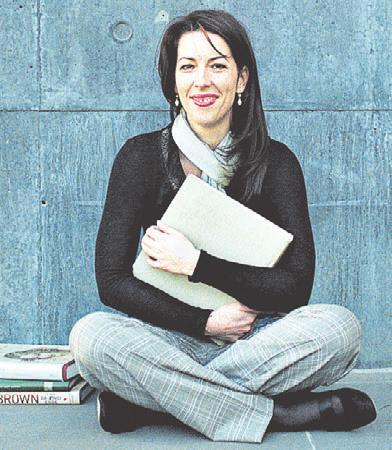
Vinci Code in 2003 stunned Dr Challis because suddenly people were questioning her about the meaning of artworks from the Renaissance period. While writing her thesis, only two people ever asked her questions about her work, she said. These were her husband and her university supervisor.
With the publication of The Da Vinci Code, she now found there was a major public fascination with the topic, and so she decided, belatedly, to read the book.
Although she found Brown’s work entertaining, there was absolutely “no proof to what he is saying at all,” she says.
Dr Challis is fascinated by the fact that so many people believe the Da Vinci Code version of history when there is no evidence at all to support it.
She agrees with the suggestion that this widespread belief has something to do with the “postmodern mindset,” whereby people increasingly have no concept of historical facts at all, and are thus easy prey to the first semi-credible version of history offered to them.
“I get the feeling that this book couldn’t have been published 20 or 30 years ago and got the reaction it has,” she said.
Dr Challis says that the historical Leonardo Da Vinci - who is fictionalised in the Da Vinci Code as a keeper of the ‘secret truth’ about Jesus, Mary Magdalene and their descendants - is misrepresented in the book in a quite significant way.
“The real Da Vinci was a devout Christian,” she says. “He worked in the context of his Christian faith.
“This fact is glossed over in the book,” she says.
Dr Challis says she emphasises to her audiences at public lectures that Da Vinci was a man who never simply believed what he was told, but sought out the truth through experiment, dissection and research.
She believes that this holds an instructive example for people when they come to read the Da Vinci Code - don’t simply believe what the book says, but check out the facts.
Another fact she has noticed from her lecture tours is that many people have become extraordinarily engrossed in the book’s ideas.
Entire families have turned up at her lectures, with every member having read the book. Family discussions about the Da Vinci Code have replaced watching television, in some cases.
A frequent question Dr Challis puts to audiences is “what has this book meant to you?” While this question typically draws many different answers, she is struck by one frequent response in particular.
This is a feeling, expressed by many people, that they are disconnected from the Church. For this reason, they are attracted to the book’s “human aspects,” involving the idea that Jesus had a family, a lover and a child.
Many people seem to find this a “sympathetic and empowering” idea. Unfortunately, it is also an idea which is “totally fanciful” from an historical point of view, she says.
As an historian, Dr Challis emphasises that our knowledge of history depends on what is contained in documents from the past.
Based on this premise, there is no reason for taking seriously the historical claims made in The Da Vinci Code, she says.
Discussion about the past, such as the discussion engendered by the book, is a good thing, Dr Challis believes. But a clear line must be drawn between what is known about history, from its documents, and mere speculation.
- Page 16: Challis lecture details







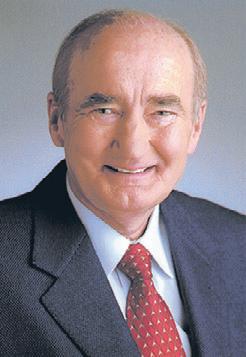

Join Pope Benedict XVI in prayer - May


Mission intention: “That in the mission countries those responsible for the public institutions may, with suitable laws, promote and defend human life from its conception to its natural termination.”

General intention: “That the abundance of the gifts the Holy Spirit bestows on the Church may contribute to the growth of peace and justice in the world.”


I
May 4 2006, The Record Page 3
I’m John Hughes, WA’s most trusted car dealer
I guarantee that when people come to
business
me, they will be treated with courtesy, sincerity, professionalism and ef ciency?
say
I m prepared to
stand behind every car I
Do
do
with
I
“I want your business and
pay for it” and “I
sell”. Is that really true?
dedicated
getting
Is it true that I have over 40 technicians who are
to
my used cars in rst class condition before sale?
consecutive years I ve
somebody
car
I will
similar inspection?
Is it true that every year for the last 17
been Australia s top selling Hyundai dealer? Is it true that if
buys a used
from me,
pay for a pre-purchase RAC or
have
warehouse
cars under $10,000. Is
that
full money back guarantee within
week? • • • • • • Just over the Causeway on Shepperton Road, Victoria Park. Phone 9415 0011 DL 6061
JOHN HUGHES Absolutely! CHOOSE YOUR DEALER BEFORE YOU CHOOSE YOUR CAR St. Rita’s Catholic Books Ph: (08) 9446 5069 info@stritabooks.com www.stritabooks.com Visit our new website to see our complete range of over 1000 titles or contact Paul or Janice for a catalogue. Mail orders welcome. We also stock videos, DVDs, tapes and Italian books. See website for details. Stefanelli Sawmillers Jarrah T&G Flooring (Standard and Select) . . $33 m2 Jarrah Reeded Decking 65x20 . . .$2.20 L/m Jarrah Pickets 70x20 . . . . . . . . $1.85 L/m2 Pine 140x35 . . . . . . . . . . . . . .$4.60 L/m Pine 120x35 . . . . . . . . . . . . . .$4.00 L/m Kapur Barge. . . . . . . . . . . . . $10.30 L/m Buy direct from our mill and save! Phone: 08 9250 1899 or 0403 024 154 426 Great Northern Hwy Middle Swan ★ Experience The Pilgrims Road 2006 ★ Freecall 1800 177 788 For further information Cathie Rice Travelworld Lic No 9TA0495 Come along and join Father Jess Navarra on this escorted Pilgrimage tour visiting Fatima, Spain and ending in Rome. Departs Perth 10th July 2006 Flying Singapore Airlines Optional Extension at the end of the Pilgrimage. #6W63947-6/4 31/3/062:51:37PM
a
selling
it true
I offer a
one
JohnHughes
By
Dr Kate Challis
Stemcell grant welcomed
Spin doctors at The West
Newspapers and their journalists are generally supercilious about other journalists who take employment in public relations roles in government and business, dismissing them as “spin doctors”.
The foundation for this presumed moral superiority was that PR consultants are pushing a particular side of a debate while honest newspaper hacks are presenting all sides of the story impartially and allowing readers to draw their own conclusions.
This distinction has been thrown out the window at The West Australian, and the paper is now indulging in rather extreme propaganda.
In last Friday’s paper (April 28, page 5) journalist Graham Mason announced that Premier Alan Carpenter had declared that he would not support the creation of human embryos that would be destroyed in medical research.
This was definitely news, but was it announced in straightforward, impartial journalistic manner? Most definitely not!
The opening sentence declared, “Alan Carpenter has dealt a blow to his own push to put WA at the forefront of medical science by declaring that he did not support the creation of human embryos for research.”
PO Box 75, Leederville, WA 6902 Tel: (08) 9227 7080, Fax: (08) 9227 7087 cathrec@iinet.net.au
Where is this “forefront of medical science”? In the last four years of legalised destruction of living embryos (excess to the IVF industry) there have been no advances in medical treatment. There have, however, been numerous successful treatments of patients using adult stemcells, a process that does not require the moral corruption of destroying living human embryos.
Worse was to come. In its next sentence the newspaper declared that the Federal Government was under pressure (to allow cloning) “from some States, notably Victoria and Queensland, which want approval to become world-leading biotechnology centres”.
This is farcical. No State needs approval to become a worldleading biotechnology centre. All it needs is a lot of brains, a lot of integrity, and some financial backing.
Furthermore, it is ludicrous to pretend that if cloning were permitted, all or any of the Australian States would therefore become “world-leading biotechnology centres”.
When people are arguing for good, honest causes, they tend to use good, honest arguments. When they dip into the moral morass of abandoning respect for human life, they are inevitably reduced to such levels of propaganda that spin doctors cannot compete.
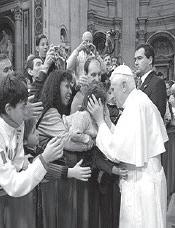


$22 million “excellent”, will assist leading Australian research
The federal government’s announcement of a $22 million grant to Griffith University to establish a dedicated adult stem cell research centre was a wonderful boost for cutting edge, ethical science, the Catholic Church said today.
Bishop Eugene Hurley, Chairman of the Bishops’ Committee for the Family and for Life, said the government funding was recognition of the excellent work being done in adult stem cell research at Griffith University.
The centre, to be headed by Professor Alan Mackay-Sim, Deputy Director of Griffith’s Eskitis Institute for Cell and Molecular Therapies last year showed that adult stem cells from the nose could be grown into many
types of cells, including heart, muscle, liver, kidney and blood cells.
They could ultimately develop treatments for brain diseases, such as Parkinson’s Disease, motor neurone disease and schizophrenia.
“This funding will help those scientists to pursue stem cell research, using adult cells rather than using, and destroying, human embryos for research,” Bishop Hurley said.
“The results so far have been groundbreaking and they will be used to help fight a range of serious diseases.
“This is exciting work and we congratulate the federal government for recognising and encouraging such efficient and ethical research in this way.”
Gender spirituality talk
A seminar on gender differences in spirituality will be held on Monday May 8 at the Catholic Pastoral Centre, 40 Mary St, Highgate at 7.30 pm.
Whether there is a difference in life’s spiritual journey as experienced by men and women will be the focus of a presentation by Dr Neil Preston, a senior research psychologist at Fremantle Hospital.
Dr Preston will speak on how incarnational theology and modern depth psychology overlap to suggest differences in the spiritual journey between the genders.
Further information: (08) 9422 7912.
Teams do it the old-fashioned way
The Record understands that the recent ANZAC Day football match at Trinity playing fields in Manning between players of several parishes on the one hand and St John’s proCathedral on the other was a feisty, physical affair with more than a few shoves being traded.
And it was not what the average Aussie footy spectator might have been used to seeing at a game.
Clergy led prayers before, during and after the match praying, presumably, for victory from Almighty God for their respective teams.
Captained by Fr Michael Rowe (Latin Mass chaplain at St John’s) and Fr Milton Arias (assistant priest, St Mary Star of the Sea parish in Cottesloe), the two teams slugged it out on the field.
Sources embedded deep in both teams report that players played with great passion.
Pouring rain could not dampen the spirits of mighty Australian sons who went at it hard in a good oldfashioned Australian sort of way.
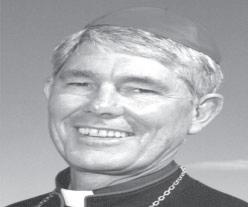
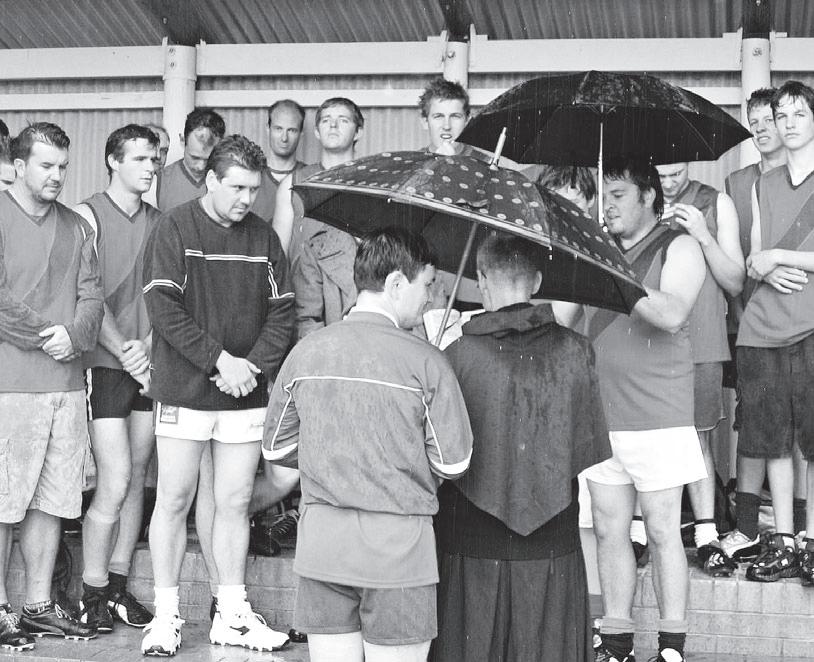
Blessings: Fathers Michael Rowe, and Terence Naughton pray before the match.
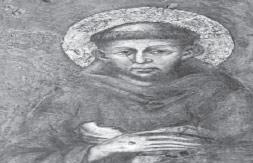


Page 4 May 4 2006, The Record All prices do not include taxes Lic. 2TA 003632 “Pilgrimages evoke our earthly journey toward heaven and are traditionally very special occasions for renewal in prayer.” Catechism of the Catholic Church, 2691. $4250 priced at Departs 17 Jun - Fr Kevin Saunders & Fr Leo Burke 1 Sep, 27 Sep - Fr Geoff Plant 22 Oct - Fr Patrick Vaughan, & 23 Nov 2006. $4595 prices from THEHOLY LAND Amman (1 night) • Sea of Galilee (3) • Cana Mt Tabor • Nazareth • Mt of Beatitudes Jerusalem (5) • Exodus Journey Link $4590 from Departing 26 June - Fr Warren Edwards (pictured),1 Sept - Fr John Rate 6 Oct - Fr Geoffrey Plant HARVEST PILGRIMAGES WORLD MEETING OF THE HOLY FATHER WITH FAMILIES Valencia • Spain • 11 day pilgrimage Departing 1 July 2006 Theme: The Transmission of Faith in the Family Optional Extension to Spain & France (7 nights): Montserrat • Lourdes Santo Domingo de Silos Avila. Priced at $1550 Personally escorted by Bishop Eugene Hurley and Dr & Mrs Ron & Mavis Pirola GRACES OF ITALY Padua • Venice • Ravenna • Florence • Siena Assisi • Loreto • Lanciano • San Giovanni Rotondo Monte Sant Angelo • Pietrelcina • Optional Rome • 13 days Journey in the footsteps of some of the Church’s greatest saints.... Flightworld Travel Perth (08) 9322 2914 Travelscene Lords (08) 9443 6266 FREE CALL 1800 819 156 editorial
The pro-Cathedral team won by 4 points. Rain washed away the chances of the barbecue, but at least
half those who played on the day were happy with the result. It was the fith annual match.
letters to the editor
Around t he tabl e dnuorA t eh lbat e
Pots and kettles
Surely it is a case of pots calling kettles black - to say that a review in The West Australian is asinine, banal, cretinous, fatuous, inane, stupid and stupefying but The Record won’t say that it is worse journalism that The West is usually guilty of. It is in fact a lie to say you won’t state something when you just have.
You wasted an entire editorial venting your spleen at The West which, after all, was reporting on a film based on a work of fiction. It would have been a lot more constructive to point out the obvious holes in the Da Vinci Code and promote some mature thought and discussion on that and church history in general.
Bill Clover Bridgetown
Singapore Mass
T he realisation of the impact which liturgical ‘style’ has on the degree of fulfilment one gets from the Mass became very evident to my wife and me last Sunday when we attended Mass in Singapore. The Church, on the outskirts of the City, was packed with worshippers who demonstrated a wholehearted involvement in the celebration.
Great sadness over Record’s Easter emphasis
Iwrite with sadness to express my concern over the emphasis of this year’s Easter issue of The Record
To distribute this issue free of charge is certainly a wonderful gesture to make sure that it reaches as wide a readership as possible on a weekend when the need to celebrate the central reality of our faith brings to church many who for whatever reason may not attend on ordinary weekends.
Yet the central message of our faith is not I believe conveyed in the confronting image of physical suffering on your front page: an image which I believe to be so graphic as to render it unsuitable for the family readership to which it lays claim.
I picked up my copy, as no doubt many people did, at the Mass of the Lord’s Supper.
When considering the reasons for their involvement and our satisfaction, one could only conclude that the reasons lay in ‘how the Mass was conducted’ rather than the Mass itself.
While the content of the Mass followed traditional lines, the level of congregational commitment was markedly more apparent than what one normally sees in Australia. Was it the forty-strong choir who led us in inspirational hymns? Was it the simple, yet very poignant sermon? Was it the reverence of the ten suitclad Special Ministers or the twelve young Altar Servers?
In reality, it was all of these things which collectively enticed us both to sit and reflect after Mass on how special that particular Mass had been in our faith journey. So what can we do locally to make the Mass more of a celebration of our
WANTED
OFFICE ASSISTANTS (2)
“The Record” Catholic Newspaper in West Perth is seeking two office assistants each working three days per week
Special skills needed:
● Competency in the use of Microsoft applications-ie; Word, Excel and Outlook
● Experience in MYOB
● Excellent interpersonal, oral and written skills
● Organising business functions and appointments as directed
● Daily banking, invoicing and accounts payable
● Experience in debtors and creditors will be highly regarded
Applicants must be fully supportive of the objectives and ethos of the Catholic Church.
Please forward your application and CV to:
The Editor
The Record Newspaper PO Box 75
Leederville WA 6902
email: cathrec@iinet.net.au
Closing date 14 May 06
Only one of my children was with me: as it happened my youngest had shared with us over the dinner table his experience of having watched part of The Passion of the Christ as his RE lesson that day. And about that too I have misgivings.
I do not believe that the central message of Easter is about pain. I do not even believe that to be the central message of Good Friday. I do not believe that Christ redeemed us by His suffering. Agonising and humiliating as crucifixion undoubtedly was for Jesus, as for any of its victims, it was not a test of His physical capacity. It was a test of His obedience, of His willingness to surrender totally to God.
He redeemed us by loving us enough to do that. That is the reality we need to remember and live
faith and less of the mechanistic process which we seem to follow in Australia?
If the difference in approach is purely cultural and in reality, our Asian Catholic brethren are just more reverent and enthusiastic than ourselves, then there is little we can do. Thinking more positively however, it seems that we need to start by more actively involving the congregation in the Mass, not in a charismatic sense - as this was certainly not the approach used in Singapore, but more as an extension of the initiatives flowing from Vatican II. While it is true that we now have a degree of involvement through initiatives such as the Laity reciting the readings and the involvement of Acolytes, these things are mainly symbolic and tend, in themselves, not to engender congregational ownership of the celebration.
Secretarial/Administrator for a Catholic Office
A full time position for a mature person will soon be available in a Catholic Office located near central Perth.
Applicants must possess the following
attributes:
● Excellent typing and Dictaphone skills and have good written English and oral communication.
● A sound knowledge of general office procedures is required, with intermediate computer skills and effective organizational ability.
The person will be required to work in a shared environment, dedicated to assisting in a pastoral care aspect of the Church’s ministry.
Any applicant must be fully supportive of the objectives and ethos of the Catholic Church.
Please forward your application in writing and include Resume, qualifications and references/referees to :
The Judicial Vicar PO Box 6444 East Perth WA 6892
Closing date is 19 May 2006
from, not just over Easter but in each moment of our lives. Deus Caritas Est. God is Love. There is not one story for Good Friday and another for Easter Sunday. It is the same story: the story of the victory of good over evil and light over darkness from which we all live. It is that message that the world needs not just to hear (or see) but to experience.
Not the How of Easter, but the Why. The How lasts at least three hours and at most three days. The Why lasts for eternity. And Easter is our assurance that we are part of the answer.
He has come into His Kingdom. And He does remember us. How does He want us to remember Him?
Margaret Ker
Mount Lawley
Perhaps we could start by having an Archbishop-led series of seminars involving both the Clergy and Laity to discuss all aspects of the liturgy in an attempt to introduce ways of making Sunday Mass a more uplifting faith experience.
Philip Carney South Perth
Code within code?
I am very pleased to note that De Coding the Art of Da Vinci will be held at Notre Dame University on May 25. It is time the Catholic

Church took strong steps to shed some light on major errors in Dan Brown’s best selling novel. Brown’s Da Vinci Code has created a lot of interest and caused quite a storm.
Some people discount the Gospels of Matthew, Mark, Luke and John as nothing more than far fetched fables but are very quick to accept every word of the Da Vinci Code as if it was the Gospel truth. They are also happy to believe Brown’s portrayal of Opus Dei as a sub branch of the Gestapo.
The Da Vinci Code, an interesting work of fiction that is historically inaccurate in many respects, purports to lead people to the final resting place of The Holy Grail. How ironic, therefore that De Coding the art of Da Vinci will be presented by a lady named Challis. Is this a code?
Noel Bourke Heathridge
TV Mass thanks
I want to thank Channel 10 for its Mass at Home every Sunday at 6am for people like myself who can’t attend my parish every week.
I was also pleased to be able to see a live telecast from St Peter’s for Passion Sunday on Access 31, together with the handing over of the World Youth Day Cross and the accompanying banner to Archbishop Pell.
It was uplifting to see the youth from all over the world, especially the Australians.
Mrs DM Smith Osborne Park
Pastoral Planner
Pilgrim of the World Youth Day Cross and Icon World Youth Day Sydney, 2008
World Youth Day Sydney, 2008 is seeking suitably qualified and experienced candidates to be part of the pilgrimage accompanying the journey of the World Youth Day Cross (WYD) and Icon until July 2008 and the conclusion of the WYD.
The Pastoral Planner’s major focus is to assist the Co-ordinator of the WYD Cross and Icon in Australia:
● To prepare for the journey of the Cross and Icon with the relevant ‘grass-roots’ people in each diocese in Australia, and
● To develop events and experiences for young people with the WYD Cross and Icon that will engage with them as young people, and enable them to hear the message of the Gospel.
The successful applicant will have:
● Significant pastoral experience
● Experience in faith formation and spiritual formation
● Tertiary qualifications in one or more fields relevant to the role
● Experience working with a cross section of groups including schools, parishes, youth movements and communities
● Capacity and skill to organise evangelisation, mission and liturgical events
● Experience in organising pilgrimages and processions and working with volunteers
● Capacity to build morale in a demanding environment
● Highly developed interpersonal skills
● Demonstrated commitment to the ethos and values of the Catholic Church and its Tradition
● Skills in using Microsoft software applications. For further information and a copy of the position description please contact Anthony Spata on (02) 9390 5317 or email anthony.spata@ado.syd.catholic.org.au
Applications to be forwarded to:
Anthony Spata, Manager, Employment and Staff Development, Catholic Archdiocese of Sydney, Level 16, 133 Liverpool Street, Sydney, 2000 or to anthony.spata@ado.syd.catholic.org.au.
Applications close 14 May, 2006.
May 4 2006, The Record Page 5
LETTERS TO THE EDITOR

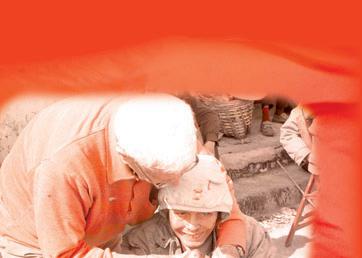
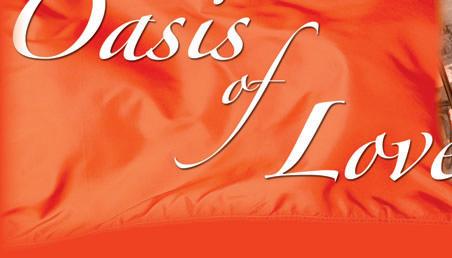
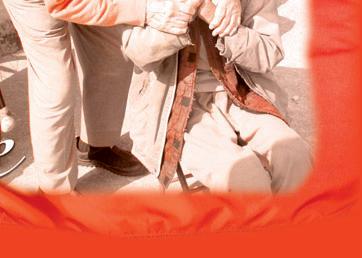
A place in the HEART of CHINA
In China those who suffer leprosy bear not only physical disfigurement but often the hostility, fear and ignorance of others. In the 1980s one man set about doing something to show them that whatever else their lives are about, someone at least is prepared to love them without limit. In March, Record reporters JAMIE O’BRIEN and DEREK BOYLEN visited Macau and Guangdong to compile this special report...
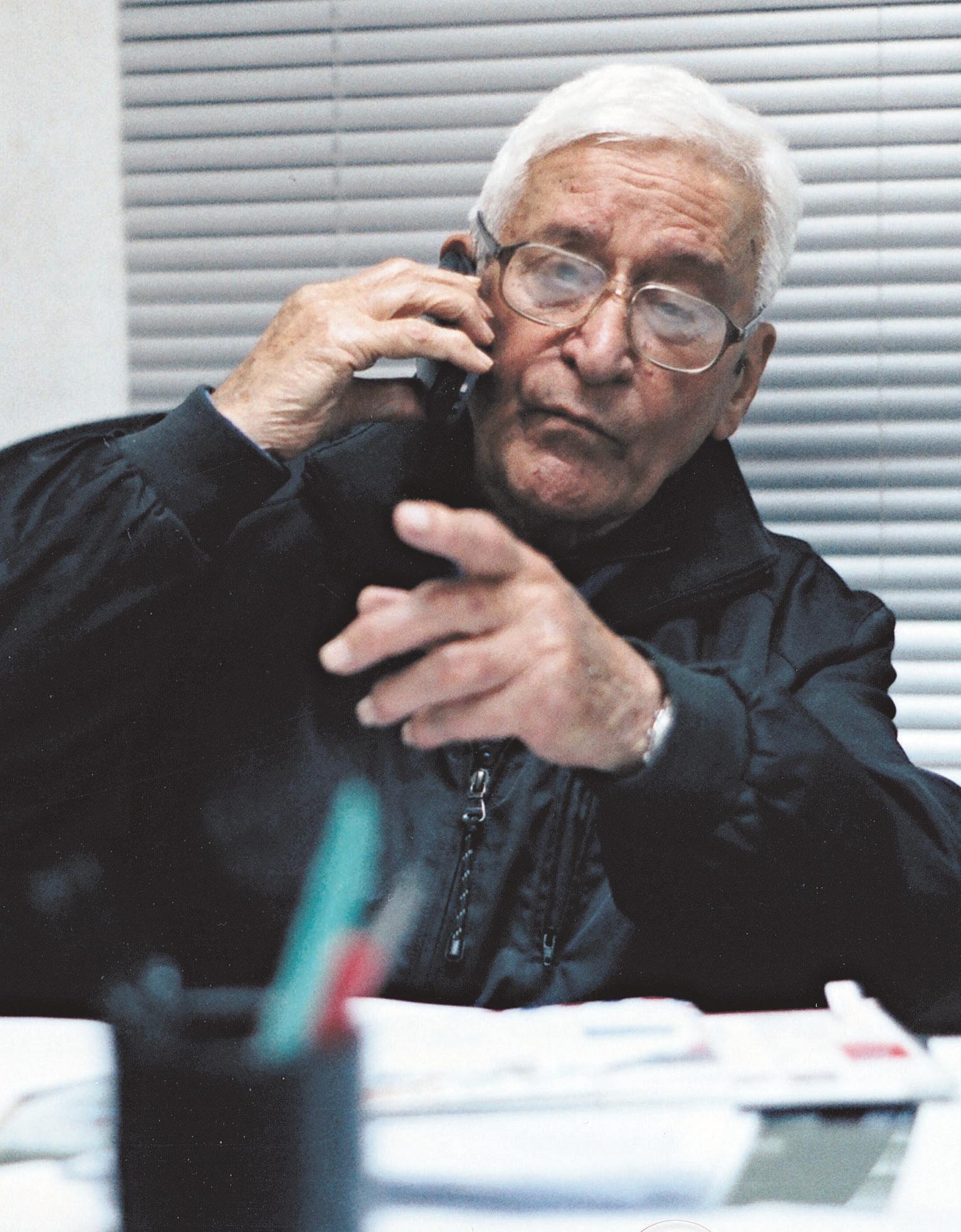 By Derek Boylen
By Derek Boylen
“Fr Ruiz is a living legend,” says Fr Felix, an Indian Jesuit on sabbatical in Macau, as he lounges back from breakfast. He means it in the original sense of the word, “in some places in the North, Fr Ruiz is bigger than Father Christmas.”
Fr Ruiz’s is a short man, slightly hunched, hair white with age. His thick-rimmed glasses magnify his eyes and his black sneakers seem more like slippers. At 92 years of age Fr Ruiz could pass for most of the world’s grandfathers.
But few grandfathers can lay claim to have done as much for others as Fr Ruiz. Just some of his achievements include: the building of an orphanage, the care of thousands of lepers and children, the building of centres for the elderly and people with mental disabilities; he has housed, clothed and fed tens of thousands of refugees, has travelled to East Timor and some of the most needy places in Africa to help the poor, he has built fruitful relationships between the Chinese government and the Church and he has suffered typhoid, a coma and a heart bypass. At 92 years though Fr Ruiz would put many 20 year olds to shame.
Born Luis Ruiz on September 21, 1913 in Asturias, Spain, he joined the Jesuits a day before his seventeenth birthday in 1930. However, the following year the second republic of Spain came into being. Catholicism was abolished as the state religion and all Jesuits were expelled from the country. Fr Ruiz was forced to continue his first studies with the Society of Jesus in Belgium, which he completed in 1937.
Following their initial studies Jesuits are expected to teach. So Fr Ruiz was sent to Cuba. He recalls that an up-and-coming student was a young man by the name of Fidel Castro. While Fr Ruiz never had Castro as a student he has a clear memory of him on campus. It was four years later in 1941 that Fr Ruiz began his missionary work in China arriving in August of that year. It was during this journey that he learnt to speak English. His first appointment was to Anking. He did missionary work and learnt Mandarin. However, a year later his studies of the language were stopped because of the war. From 1942—46 he went to Shanghai where he studied and taught theology. In 1945 he was ordained to the priesthood.
Following the war Fr Ruiz went back to his missionary work in Anking until the communist government took control and he was imprisoned in 1951. His stay in prison was a short one though. While in prison he contracted typhoid and was sent to a hospital in Shanghai. Then, in October of 1951, he was expelled from the country.
Reassigned to work in the Philippines he didn’t get far. Still recovering from typhoid, his provincial told him to stop in Macau, a small Portuguese colony off the coast of China, until well. Fr Ruiz never left.
Within a month he began working with the refugees from mainland China, Indonesia and Burma. The first thing he noticed was that they had no place to celebrate Mass and immediately petitioned local authorities to give him a Church to celebrate Mass with them and to offer catechesis. At the time of his arrival in Macau, the local parish of St Augustine was only open on Fridays.
Fr Ruiz quickly sought permission from the local Bishop to open the Church on a regular
Page 6 May 4 2006, The Record
Make it so: At 92 Fr Luis Ruiz is still going strong and would put many men half his age to shame in terms of energy expended on the job each day. Seated in his office he discusses plans for the establishment of another leprosarium where “more people can be happy.”
Photo: Derek Boylen
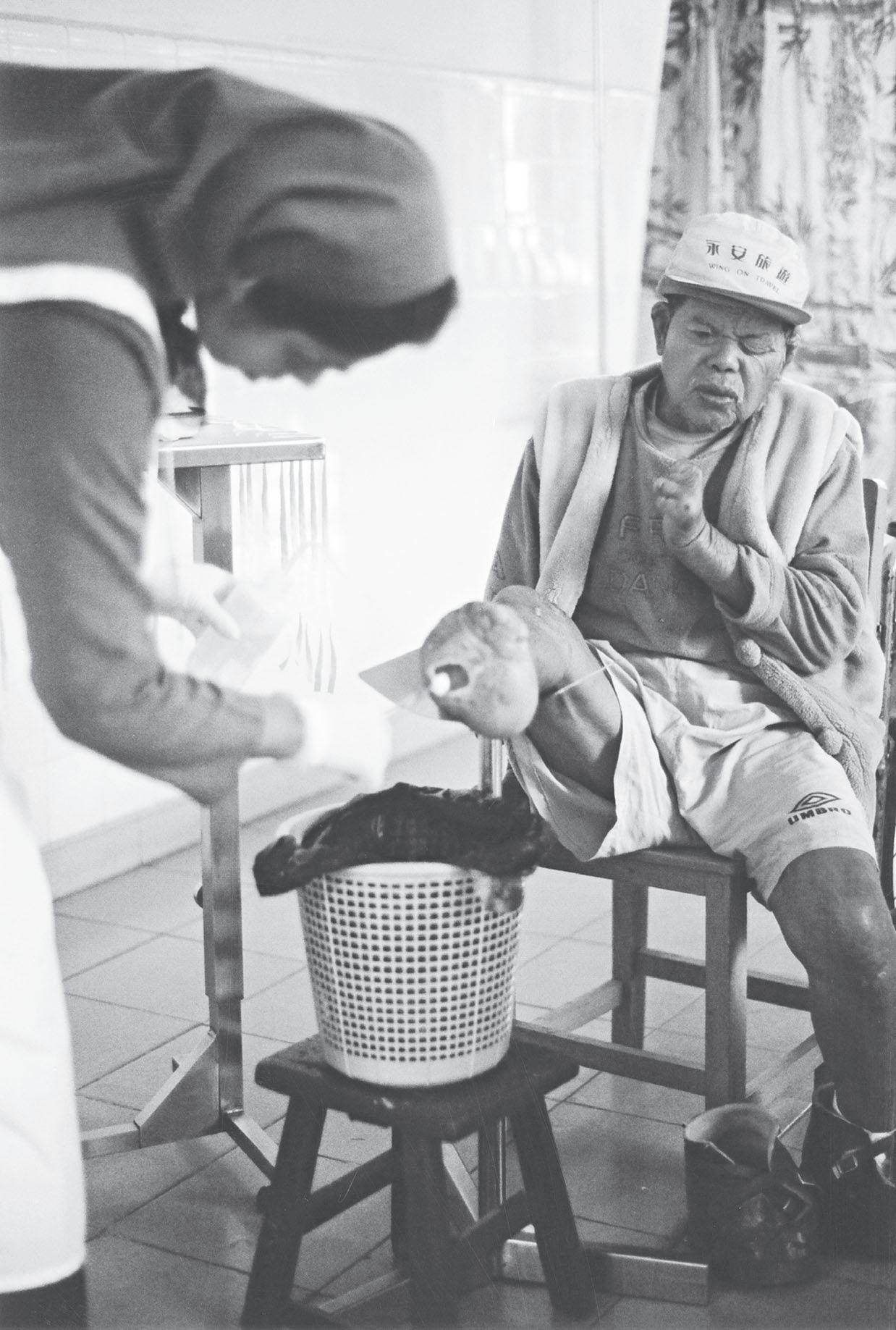
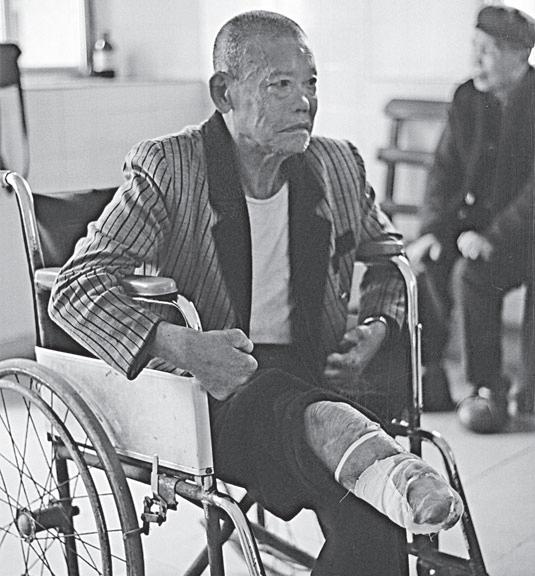
basis to say Mass. His work with the refugees occupied most of his time in the following years. During that time he baptised over 5000 people. Until China reclaimed Macau from the Portuguese in 1969 it is estimated that Fr Ruiz helped to clothe, shelter and feed over 30,000 refugees.
“Life was intense during those times,” Fr Ruiz said.
After China reclaimed Macau the tide of refugees slowed dramatically but not completely. In 1982, for instance, 7000 refugees came from mainland China. For two months Fr Ruiz housed, clothed and fed them before they were deported by Chinese authorities.
But his efforts brought him the attention of the Chinese Government, who revoked his visa. However the wily Jesuit wouldn’t give up.

“Leprosy doesn’t kill its victims. It leaves the major organs untouched. The worst and often final end for many lepers is a life of rejection, exclusion and isolation from the rest of society.”
The legacy of Leprosy
■ By Derek Boylen
Sam Qui Heng (pictured at left) contracted leprosy at the age of six. Now aged 70, he still has tears when he shares his story.
When he caught the disease his mother didn’t want him any more. She began abusing him, calling him names, sometimes hitting him, and blaming him for his condition.
Not long after, his younger sister died of an unrelated disease. His mother blamed him for her death.
When he discovered that his mother intended to bury him with his sister in a cave he ran away. Some months later, at the age of seven, while begging on the streets to survive, he was found by government officials and sent to the isolated island leprosarium of Tai Kam.
Sam Qui Heng never left. He has spent the last 60-plus years of his life trying to survive on the island.
He has never seen a movie or bought clothes at a shop. He barely remembers what it is like to be loved by a family. He doesn’t know if he has brothers or sisters, nieces or nephews, uncles or aunts. The War on Terror, September 11 and the Winter Olympics mean nothing to him.
In this part of the world a leper is almost not a person. Sufferers are not part of the community or broader society. Because of fear and ignorance they are rejected, excluded and isolated.
Leprosy doesn’t kill its victims. It leaves the major organs untouched. Mycobacterium leprae affects the skin, peripheral nerves and mucus membranes. Attacking the nervous system it deadens the patients feeling of pain, causes clawing of the hands and permanently stops the hands and feet from being able to sweat.
Because they can’t sweat they become dry and cracked. The result is massive weeping legions that can take years to heal and will need lifelong care to prevent drying out.
Leprosy can now be healed but if left untreated the condition results in the loss of hands and feet, disfigurement of the body, blindness and wounds that can become infected and gangrenous.
The worst and often final end for many lepers, though, is a life of rejection, exclusion and isolation from the rest of society. This is certainly the experience of the thousands of lepers in China and in many other places throughout the world.
The legacy of leprosy goes far beyond the physical symptoms we can see from the outside. Leprosy damages a person’s dignity. The sufferer craves for human touch, the kind of touch that tells us we are loved and accepted. He yearns for the assurance that though he may appear physically abhorrent he is still a human being made in God’s image and likeness.
The work of those who care for them is not just to heal the physical wounds, but the deeper scars that come from not being loved.

He managed to arrange a meeting with the-then President of Spain, Felipe González Márquez, who was visiting Hong Kong. Marquez then pressured the Chinese until Fr Ruiz was allowed back to continue his work some months later.
Through the donations of friends, Fr Ruiz went back to Spain in 1970 for the first time in 40 years, visiting family and friends he hardly remembered, but had never forgotten.
Along the way, he also stopped in the United States, United Kingdom, Canada and Australia, where he visited many of those he had assisted as refugees.
He also visited parts of Africa and East Timor to see what he could do to help those in need in those places.
Fellow Jesuit Fr Fermin Rodriguez SJ says
that Fr Ruiz has done so much work that many times he forgets what he has done.
“He has an intuition for where there is a real need,” Fr Fermin said.
“He is all work, no talk.
“He really believes God is present in the poor, that God has given him a special gift and he has to share that.”
At the time he was keeping in contact with over 2000 people from around the world by mail, a habit he still keeps up even at his age. Most of the financial support that his work currently receives comes from these people whom he helped.
Among the many places he travelled to was Perth. He says with affection in his voice “Perth was one of the best places. I stayed at the University of Western Australia there.”
However, while the tide of refugees slowed considerably after 1969, Fr Ruiz is not one for idle hands. Between 1970 and 1976, with the assistance and on behalf of the Diocese of Macau, Fr Ruiz opened Caritas Macau. While running Caritas he opened five centres caring for the aged as well as young men and women with mental disabilities. It was during this time that Fr Ruiz asked the Sisters of the Charity of St Anne to come and support his work. Fr Ruiz says that this was the best thing that he has ever done, “the Sisters help has made many things possible.” These centres now provide a home and care for several hundred elderly and people with mental disabilities.
In November of 1977 Fr Ruiz took his
May 4 2006, The Record Page 7
Hands of love: Sister Lizzy, a Sister of Charity of St Anne, tends the foot of Sam Qui Heng on the island of Tai Kam, a job which involves a daily changing of bandages. Together with her fellow sisters she cares for 79 lepers.
Continued on Page 9
Photo: Derek Boylen
Love in action: A patient waits to have his bandages changed, left as Sr Lizzy assists another. Right, a number of lepers gather to play a game of Mahjong.
Photos: Jamie O’Brien and Derek Boylen
An island that’s also an oasis of love
■ By Derek Boylen
In the small chapel on Tai Kam island 45 people gather in prayer. Forty of them are lepers. They have been up since 4.30am getting ready, as they do everyday. It takes a long time to dress yourself and put on artificial limbs when you don’t have hands or feet.
This is a daily ritual for Catholic lepers on Tai Kam. Rain, hail or monsoon, they gather at 6.30am and 2pm for prayer. Once a month they receive a visit from a priest of the official Patriotic Church for Mass.
The Island of Tai Kam has a long history and some of the lepers there have been around for much of it.
Tai Kam was originally a Protestant mission. Half way up the mountainside behind the leprosarium is a tombstone that bears the name of the Baptist pastor who first came to Tai Kam in the early 1920’s. Tai Kam was the place where the local Chinese abandoned their lepers.
By 1928, together with an assistant pastor, a doctor and his wife, he had built a leprosarium. While the pastor died in 1930, these pioneers continued until the 1950’s when the communist regime expelled foreign missionaries from China.
The period from 1930—1945 was a challenging time for the leprosarium. Over 200 died from famine and only 4 survived the Japanese invasion. Of those four, one is still alive today.
Between 1953 and 1958 more leprosy patients were sent from the Ngai Sai province and a Maryknoll priest, Fr Sweeny Quin, took over the care of the lepers. Fr Sweeny Quin had spent six months at the colony back in 1930. He was helped by Sr Suen. In 1954 Fr Sweeny was forced to leave also. Before going he gave Sr Suen some gold bars to help care for the lepers as long as possible. That same year Sr Suen was jailed for refusing to give up the location of the gold. She was released from jail 20 years later in 1974.
In 1983 Fr Lino Wong, who had been in jail for many years came to Guandong province and became aware of the state of Tai Kam. He asked Fr Luis Ruiz SJ who had been working with the poor in Macau for help.
The following year when Fr Ruiz came to Tai Kam for the first time he was horrified.
The conditions that the lepers where living in were appalling. Their wounds were untreated, in some cases gangrenous. Rats walked around in broad daylight eating their food. Fishermen kept well clear of the island.
Fr Ruiz began supporting them through the provision of materials to rebuild the leprosarium. In 1989, after building up connections with the local government he was able to get the Sisters of Charity of St Anne to begin caring for the lepers. Fr Ruiz has been financing their care through the sisters ever since.
Fr Ruiz and the sisters are now family to the lepers. Most of the lepers, on average between 60 and 90 years old, say that the last eight years have been the happiest in their lives.
For Fr Ruiz though, Tai Kam opened a door. He is now working with over 100 leprosariums on mainland China. Twenty leprosariums have the sisters. Most, he finds in similar conditions to the situation of Tai Kam.
As for Tai Kam now, in the last year, since locals have seen the sisters working with the lepers without contracting leprosy, fishermen are beginning to develop a small village close to the leprosarium. They regularly trade with the sisters for goods needed. The lepers sell their vegetables and buy fish from the village through the sisters. The lepers now refer to Tai Kam as an “Oasis of Love.”

Macau
This is the place where Fr Luis Ruiz is based and the centre of his operations as Director of Casa Ricci Social Services. Fr Ruiz’s work encompasses over 100 leprosariums and 5000 lepers from all over China. He frequently travels into the mainland visiting the lepers and Sisters who work in several of the leprosariums, providing resources and journeying to new leprosariums who ask for his help.

Tai Kam
An island leprosarium in the South China sea off the coast of Guandong province. This is the place were Fr Ruiz began his work with the lepers of China. There were 200 lepers on Tai Kam when he first started his work. Now only 60 remain.

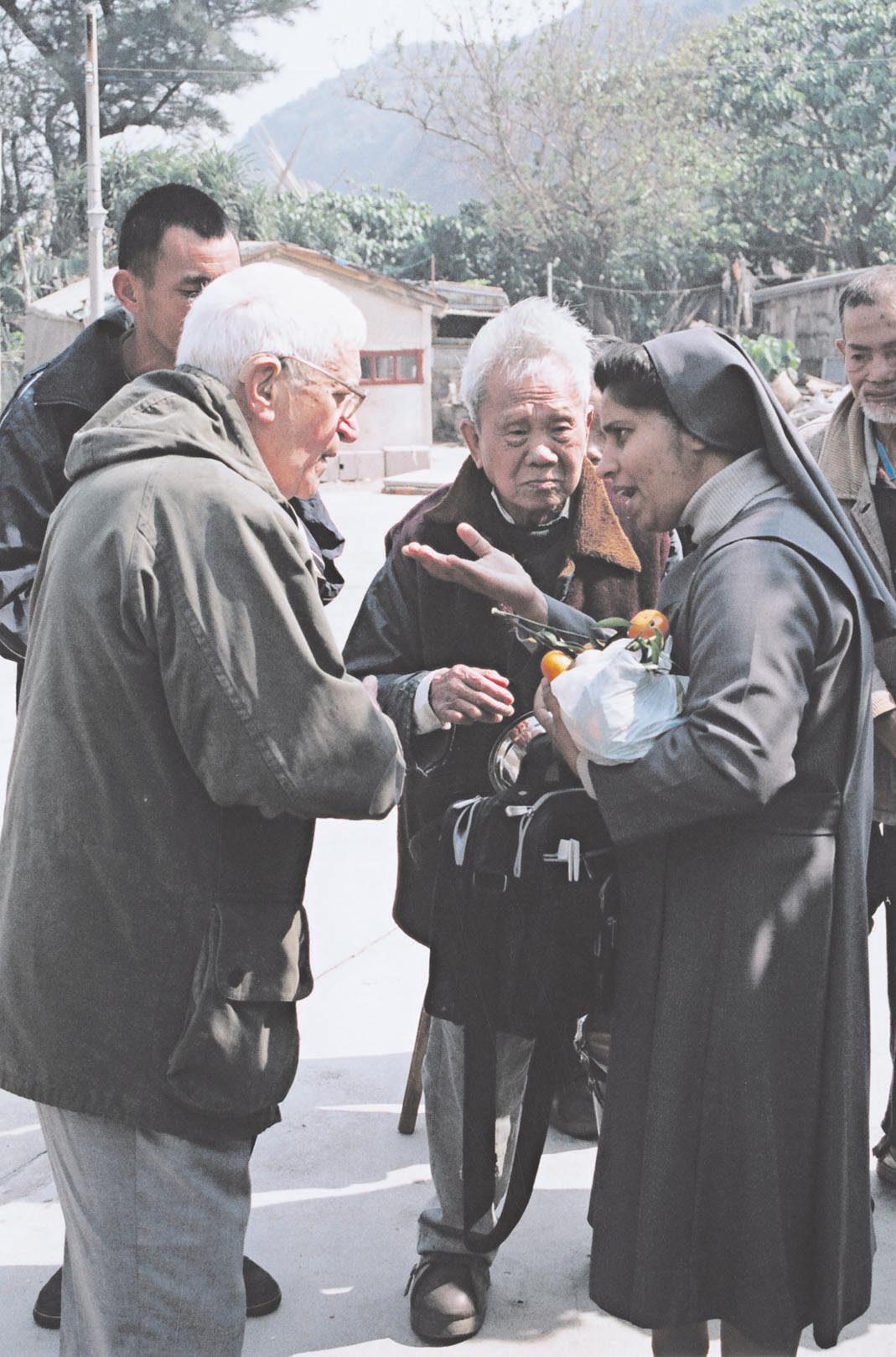
Sisters live their vocation to love
■ By Jamie O’Brien
The work of three nuns has dramatically changed the lives of more than 60 victims of leprosy on a small island in China.
Sisters Omna, Lizzy and Elizabeth, from the Sisters of Charity of St Anne, have all come from Kerala, India, to work with the lepers of Tai Kam.
The island is situated about 25 kilometres from the Chixi district. The sisters assist the patients constantly, even when they are called at midnight.
Sr Lizzy, the oldest of the three, entered the Sisters of Anne of Charity, together with Sr Elizabeth in 1980.
“This was the only sort of work that I was confident I wanted to follow,” Sr Lizzy said.
Sr Omna, says she entered the congregation because she felt called and knew she wanted to be a missionary.
The love and care shown by missionaries she encountered in India was significant in her decision to enter religious life.
She says she also has a particular concern for those who have been abandoned by society, the poor and homeless.
In 1984 Fr Ruiz began providing for Tai Kam leprosarium with the assistance and work of the Sisters of St Anne of Charity, as well as with the help of local government officials.
The sisters wake each day at 6am to pray with the lepers and by 8am are attending to their medical care.
When The Record was present at Tai Kam, seven patients came through the clinic operated by the sisters to have their wounds
cleaned and dressed, although the usual number would be about 15. Most of the lepers have been given shoes manufactured by an American priest who visited the colony a couple of years ago.
Because leprosy is a disease that affects the skin, most of the patients have difficulty retaining soft skin. Leprosy leaves the extremities of the body dry, cracks form and infection sets in. Most of the patients at Tai Kam have contracted the disease through natural causes, (leprosy is airborne), or through lack of hygiene.
If diagnosed with leprosy, a patient must be treated with multi-drug therapy (MDT), consisting of a powerful combination of two, and sometimes three drugs: clofazimine, rifampicin and dapsone. Treatment usually lasts for six months to a year.
Relapses are unlikely, and in Tai Kam, they have only happened once or twice. During the day, the lepers go about their own business like gardening and sewing.
The near-universal Chinese board game, Mahjong, is a popular past-time.
The average age of the lepers on Tai Kam is now approximately 65. The oldest man on the island is 94, and has been there since his early teens, and the youngest 43.
Some have been affected by the disease from as young as six years old (see Sam Qui Heng story on Page 7).
For most of Tai Kam’s patients, their lives on the island commenced some 50 or 60 years ago, when they were first diagnosed with the disease.
Originally the island had more than 500 lepers, but this number has slowly decreased.
By the time the sisters arrived eight years
ago, there were just over 160. Today there are 79. But when it comes to leprosy discrimination is still a problem, as is fear.
Chinese doctors formally visit the island, but won’t approach any of the patients.
Sr Elizabeth arrived in Macau in August 1991, to work in a hostel for the elderly, shortly after taking her final vows.
The three sisters were all invited through their congregation, at the request of Caritas, who received a request for assistance from Fr Ruiz.
“I feel that we are taking part Jesus’ true mission,” Sr Elizabeth said.
“It has given me great psychological satisfaction to do this work,” she said.
But Tai Kam is a two-way street as well.
The older lepers, said Sr Elizabeth, teach us too, simply by their being and will to live.
And their own motivation is simple.
“By doing this work, we help the people to feel that there is a God - and that he loves them,” she said. Having grown up in a Catholic family, Sr Elizabeth entered the Sisters of Charity of St Anne in 1980.
She recalls feeling an overwhelming sense of compassion for the elderly and unwanted, and sharing her food with many of the homeless as a young girl.
The three sisters have all learnt to speak Cantonese since coming to the island.
Just as much as the medical care they provide, they see their presence in Tai Kam as an emotional and psychological help for the patients who would otherwise have almost no one to care for them.
“We help them to feel like a social human being,” said Sr Omna.
“But we have also helped them to see that we respect their culture and way of life,” she said.
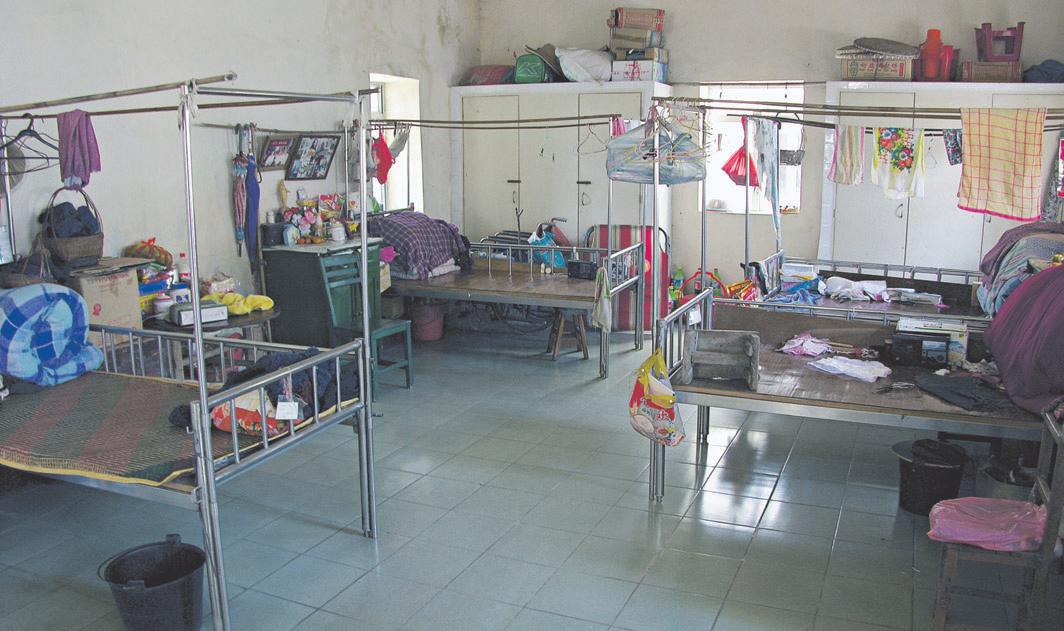
Continued from Page 7 final vows as a Jesuit. In 1984, at the age of 70, Fr Ruiz received a letter from a Chinese priest, Fr Lino Wong, who had been released from prison. On returning to his parish in Guangdong province Fr Lino had become aware of the appalling living conditions of nearby lepers and sought Fr Ruiz’s aid. The following year Fr Ruiz was able to travel to the leprosarium on the island of Tai Kam and see their living conditions. There were over 200 lepers and he was horrified at their living conditions. “There was no water, no electricity, their houses falling down.” The lepers in China are people abandoned by society. They are among the poorest of the poor. He immediately began sending financial aid to the lepers and soon with the approval of the local government and health authorities re-built the leprosarium.
Health authorities in other regions saw the work being done in Tai Kam and started to invite his help with their leprosariums. By 1994 his work with the lepers of China was overwhelming and he handed care of Caritas back to the Diocese of Macau so that he could work fulltime with the lepers of China. At some of the leprosariums Fr Ruiz was the first visitor they had received for over half a century.
Up to this day, there is an inherent fear of people with leprosy in China.
Doctors and nurses will often not even go near sufferers though they have been assigned to help them.
The lepers are people who have been exiled from society. They live with deep wounds and not just physical ones. One leper on Tai Kam was left there by government authorities when we was captured with leprosy at the
Perth businessman made Record’s visit possible
Two men in Perth made The Record’s visit to southern China possible. One was Colin Pike (see next week’s issue of The Record).
The other is well-known Perth businessman and automobile dealer John Hughes.
The Record could not afford to send two journalists overseas but knew that the story of Fr Ruiz was important.
The paper approached Mr Hughes to seek sponsorship for the visit. It took only a brief outline of what was known about the situation of Fr Ruiz and the thousands he has helped over the years for him to decide on the spot he would assist the paper to get its journalists to the story.
Record editor Peter Rosengren said he was grateful for Mr Hughes’s help and enthusiasm for the Ruiz story to be told.
“Mr Hughes was the difference between us getting it properly, and simply having to leave it to someone else – if it was ever going to be done.”

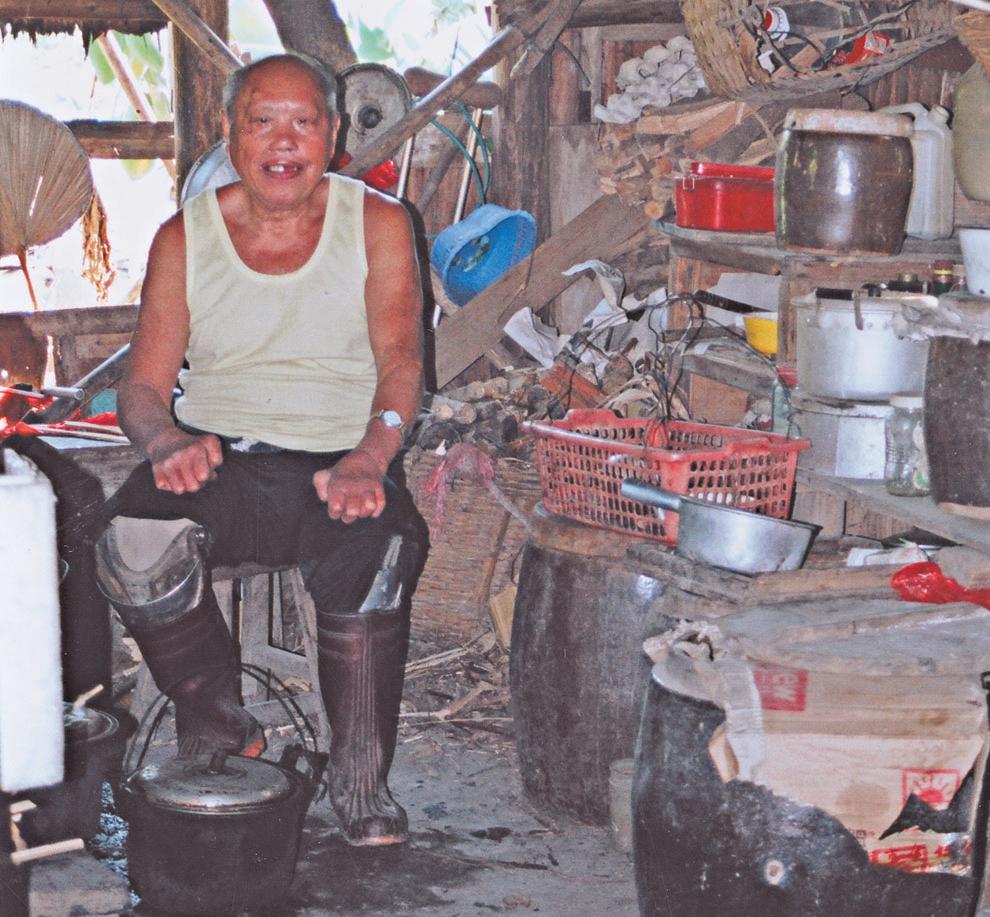
age of seven. He is now nearly 70. Another, in Zhenxiong leprosarium, was abandoned at the age of ten (now 63). They were left without parents, family or loved ones, abandoned to the care of strangers as crippled and wounded as themselves. Stories such as these are common among the lepers.
Fr Ruiz has brought the lepers in China many things: food, warmth, medical care, buildings and electricity. In the course of caring for the lepers Fr Ruiz has built 15 roads, 35 buildings, 17 schools for leper children, 5 bridges across rivers and 4 houses for religious sisters. He has provided 7 mobile clinics, 25 systems for clean drinking water and 21 systems for electricity. He provides clothes, stoves, mattresses and many of the other basic necessities for living. But most importantly he offers the gentle, healing love of Christ. He says that, “nothing is happier than to make
people happy.” In 2005 Fr Ruiz accepted an offer by the provincial government of the Hunan province to set up a HIV/AIDS centre.
Fr Ruiz took up the challenge with the help of some Sisters and in April 2005, the HIV/ AIDS Caring Centre was inaugurated in Hongjian, situated on the upper Yuan River. The centre is located in the compound of a drug detoxification and rehabilitation establishment.
The new centre got off to a start with a ceremony in which Fr Ruiz spoke of the importance of love.
Fr Ruiz says he has never been scared of being bold with his intentions.
“Plans are underway to take in 17 more patients, all in the last stages of their illness,” Fr Ruiz said.
Page 8 May 4 2006, The Record May 4 2006, The Record Page 9
Business of the day: One of Tai Kam’s inhabitants listens as Sr Elizabeth discusses the needs of the community with Fr Ruiz during a visit to the island. Photo: Derek Boylen
Sr Elizabeth, left, Sr Lizzy and Sr Omna, right, discuss the tasks ahead of them at the leprosarium of Taikam, China. The three women, from India, have dedicated their life to caring for the men and women who would otherwise have no one.
Photo: Jamie O’Brien
Home of love: The setting, above, is basic but comfortable for the 79 men and women who live in rooms such as the one above at the leprosarium in Taikam, China. Most of them wake as early as 4am to attach their prosthetic limbs and begin carrying out the day’s duties. One of the patients, at right, in his original quarters. The lepers of Tai Kam lived in residences such as these until Fr Ruiz and the sisters came. Casa Ricci has been responsible for the transformation of numerous such centres for sufferers of leprosy.
Continued on Page 10
Photos: Jamie O’Brien and Derek Boylen
Graphic: Derek Boylen

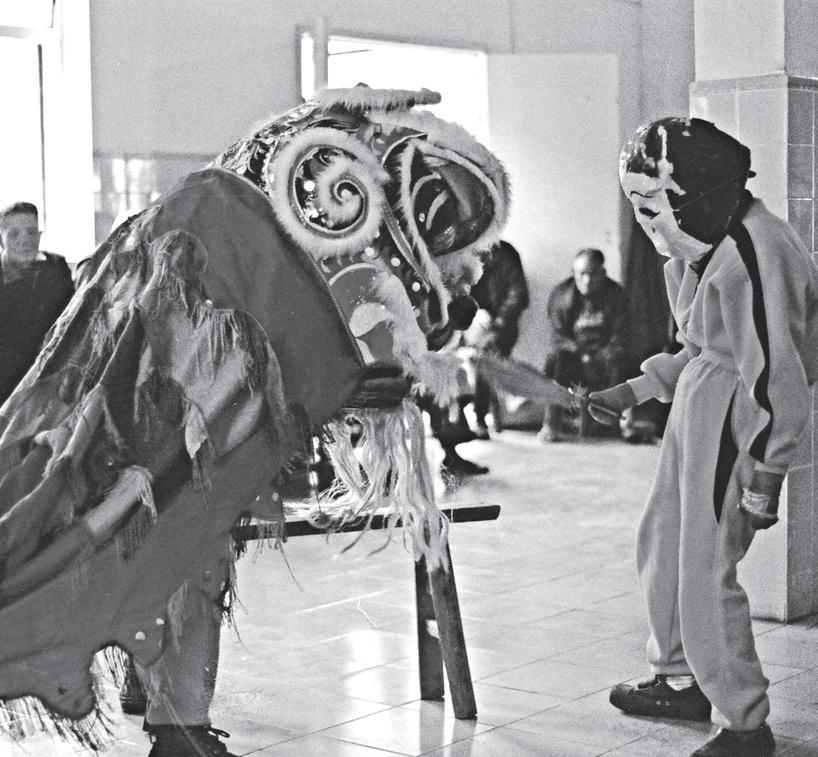
Continued from Page 9
“Two doctors who have specialised in HIV/AIDS treatment will visit the centre periodically and will be on call in case of emergencies.”
Now, at the age of 92, Fr Ruiz provides for over 100 leprosariums, thousands of lepers and their children, and has built an orphanage for HIV/AIDS children. The organisation that has developed to cope with this work, and of which he is currently the director, is known as Casa Ricci Social Services. Matteo Ricci, after whom the centre is named, was an Italian Jesuit who began missionary work in China in 1582. Matteo Ricci’s work is generally regarded as the beginning of modern Christianity in China. Fr Ruiz is the coal face of the current missionary work in China. In 2006, there are now more than 100 colonies that look after lepers, many without
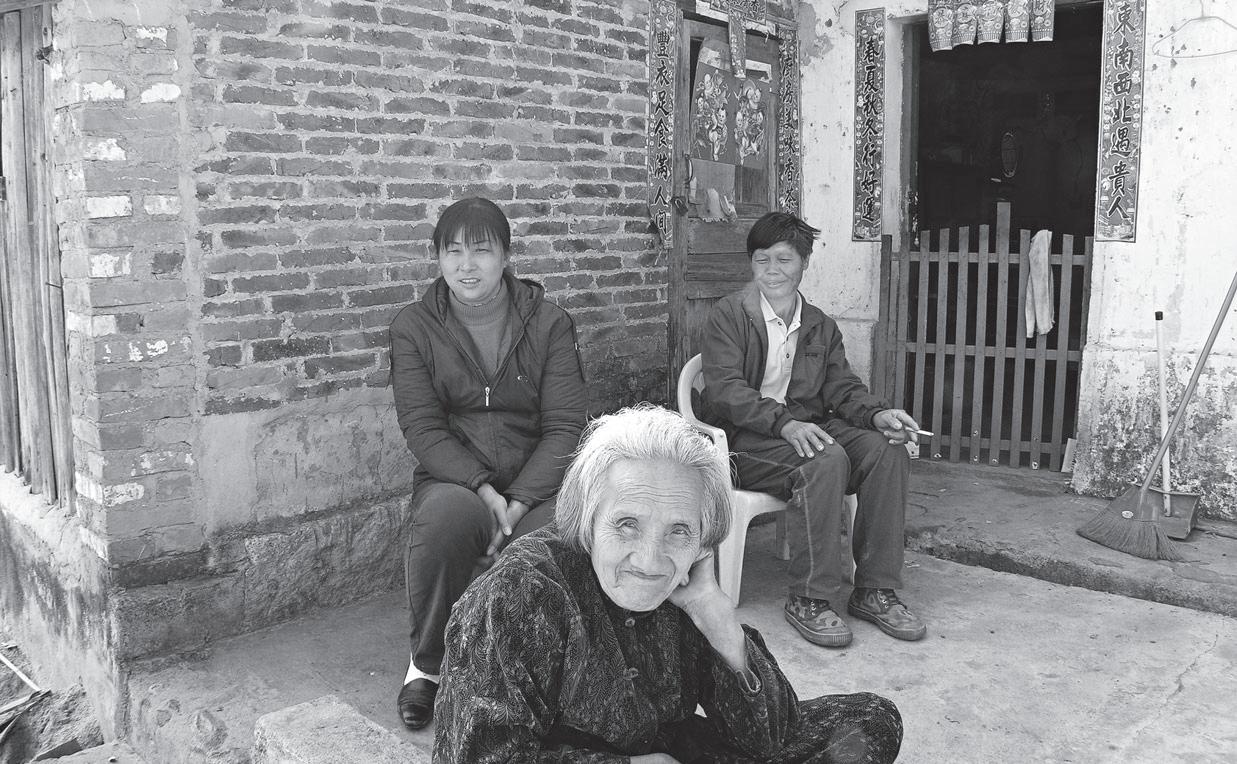
limbs, some blind, many with wounds that will never heal.
Today, schools also exist in a number of the colonies so that the children of the lepers can receive an education.
“Our Father in heaven has provided for a people in need,” Fr Ruiz said.
Fr Ruiz mentioned that throughout his day, he remembers the words of the second Eucharistic prayer, “we thank you for counting us worthy to stand in your presence and serve you.”
When asked who sponsors most of the work he does Fr Ruiz says it is people he has helped in the past. People who were refugees or the poor that he has helped at other times. They show their gratitude by giving from what they now have to help others. Fr Ruiz says that he tries not to worry about money, “my work is an action of faith.”
Looking back, he has no doubt about how it all came together.
“I always had to rely on God’s help,” said Fr Ruiz.
“I can not explain otherwise how we managed economically through all the years.”
Friends of Fr Ruiz, many in the United States of America and visitors, were moved by the work he was doing, and were continually donating money, which helped to keep the work going.
While there was no special focus, said Fr Ruiz, the simple plan was to generally meet the needs of people.
“It is very funny now because I was never worried about the money,” he said.
The Society of Jesus is thinking about the future of Fr Ruiz’s amazing life’s work. His current work with the lepers will be taken up by three Jesuit fathers. Fr Fernando SJ will
take on the day to day work of getting money and resources to the 100 plus leprosariums.
Fr Dominique Tyl SJ has begun researching future projects that have been made possible by Fr Ruiz and Fr Fermin Larranga SJ will take over provision of faith formation and spiritual direction for the many sisters who aide Fr Ruiz.
Fr Ruiz’ fellow Jesuits speak of him with brotherly love and affection. But also a kind of awe. They want you to know that he is not like other men. “God chose Ruiz for this work,” says Fr Fermin with a kind of reverence you save for conversations in church in case God might be listening.
Fr Luis Ruiz SJ may look more like a grandad than a saint. But, if ever there was a Mother Teresa for Macau and China it is Fr Ruiz.
- with additional reporting by Jamie O’Brien
Page 10 May 4 2006, The Record
Normal for here: the living quarters of a leper patient at the Bolou leprosarium. Patients have no running water or electricity. The only heating is from a portable gas stove and wooden fire. Jesuit priest Fr Luis Ruiz is aiming to get financial help so that patients can be sufficiently cared for by religious sisters. Below, left: a highlight in leprosarium life comes when patients perform a Chinese dance at Tai Kam in honour of visitors, while two patients, and right, pass the time with a cigarette while a guest nurse (girl seated left) looks on.
Photos: Jamie O’Brien and Derek Boylen


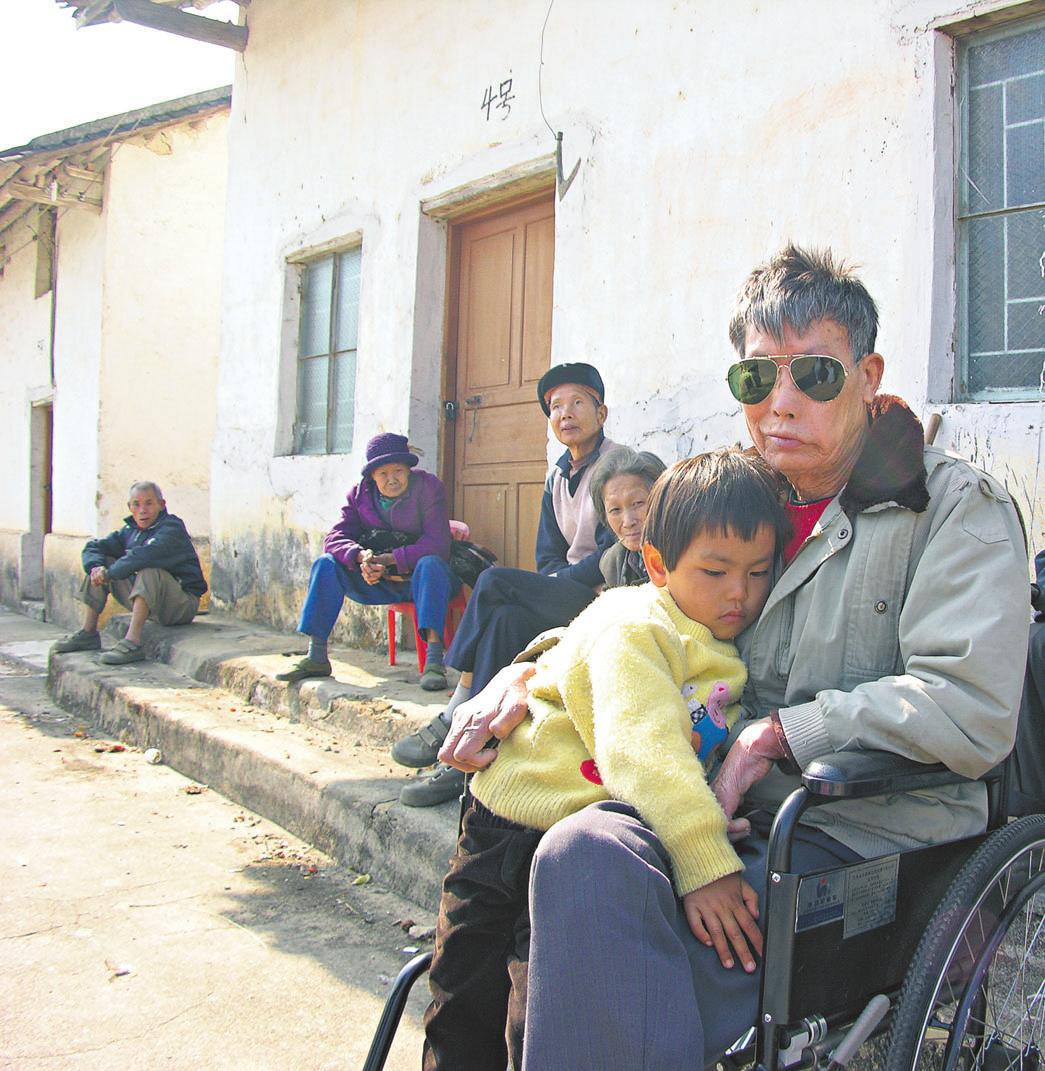
Officials request assistance
■ By Jamie O’Brien
Aleper colony in rural China is in danger of being closed down unless urgent needs for its operation are met.
The leprosarium, in Bolou, (prounced Po-lo) Guandong, China is situated nearly 10km from the town that has a population of approximately 1 million people.
During Record journalists Jamie O’Brien’s and Derek Boylen’s expedition to China to witness first-hand the work of Fr Ruiz, it took nearly an hour to travel to the leprosarium. The only entrance is a rough, unpaved road of nearly three kilometres.
Fr Ruiz, the founder of Casa Ricci Social Services, first came to Bolou in 1984 and is now trying to bring religious sisters to the colony who would provide the lepers with much-needed medical and personal attention.
Many of the 35 lepers, aged from 50 to 95, (average age: 65) have been here since childhood, because of rejection by society.
Some also had children, but these have not been infected because modern medicine brought in by Fr Ruiz has enabled the lepers to receive treatment.
The local government of Bolou gives each patient 120 RMB (about $US15) each month for living and medical expenses.
However this amount does not suffice for their daily meals, so the work of Fr Ruiz means the lepers only have to supply their own breakfast, as he supplies lunch and dinner. Conditions are appalling.
Accommodation is little more than four walls with the basic necessities – no front door, no carpet, no running water, no heating or cooling.
The majority of the lepers have great physical handicaps and open ulcers. One patient was nursing a cancerous ulcer on the left foot, and another has lost all his fingers.
Two men, because of crooked legs, get around the colony with tyre rubber on their knees.
During the day, lepers attend to their own needs, working in their gardens where they grow a variety of vegetables and fruit.
The area is almost totally isolated, but in recent times, farmers have started growing mandarins on a nearby property.
Guandong Director for Health Dr Wang de Liang visited the leprosarium with O’Brien and Boylen to show them the extent of the work needed. Dr Wang again asked Fr Ruiz to help send sisters to the leprosarium.
May 4 2006, The Record Page 11
Friendship: Fr Ruiz comforts a patient at the Bolou leprosarium in China. The colony is situated nearly 10km from the main town with the only access by way of a rough, unpaved road that takes nearly an hour to travel. Without Fr Ruiz, many of the patients would not be alive today.
Photo: Derek Boylen
Three patients look on as a child rests in her father’s lap in Bolou leprosarium. Her father is a leper.
Government officials have requested that Fr Ruiz and Casa Ricci help the lepers. Photo: Jamie O’Brien
Blood from an open wound splattered on the ground at the Bolou leprosarium. Without the medical care provided by the sisters, patients are unable to care for themselves. Photo: Derek Boylen
HOW TO HELP:
forwarded
Donations to Casa Ricci can be
to:
Fr Stephen Curtin SJ Australian Jesuit Missions PO Box 193 North Sydney NSW 2059 (02) 9955 8585
Donors should indicate they want their donations to be forwarded to Fr Ruiz in Macau.


The World
Concerns raised over Chinese ordination
Church leaders express mixed reactions after Chinese ordination
An episcopal ordination recently conducted without papal approval has drawn mixed reactions from Chinese church leaders concerning its possible impact on Sino-Vatican ties.
Father Joseph Ma Yinglin, 41, was ordained bishop of Kunming on April 30, with nine papally approved bishops from the government-approved church taking part, reported UCA News, an Asian church news agency based in Thailand. The ceremony proceeded despite the Holy See issuing a message on April 29 via the Hong Kong Diocese asking that the ordination not take place.
Anthony Liu Bainian, vice chairman of the Chinese Catholic Patriotic Association, attended the event in Kunming, 1,300 miles southwest of Beijing. He told the press that Bishop Ma’s ordination would not harm China-Vatican relations, since the new prelate was chosen by election.
However, a high-ranking Vatican source told UCA News before the ordination that the Holy See might regard Father Ma’s election as problematic because most of the 26 electors who chose him - 14 laypeople,
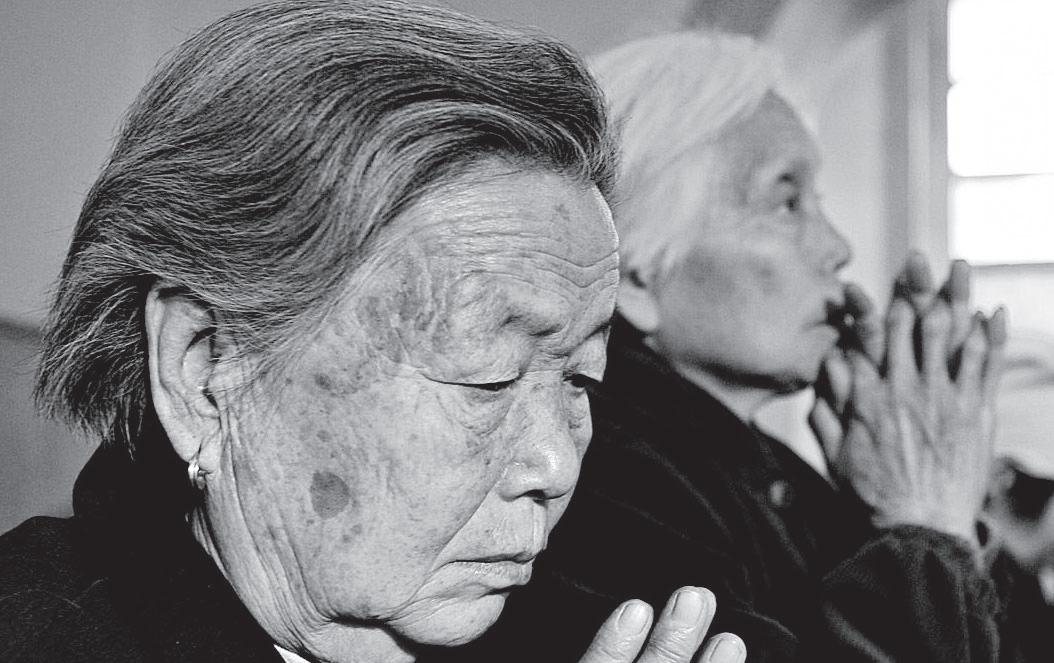
9 priests and 3 nuns - were not priests. The day of the ordination, Cardinal Joseph Zen Ze-kiun of Hong Kong reiterated his contention that those who pressure clergy to conduct episcopal ordinations deliberately harm China-Vatican negotiations. Before the ordination, at least one bishop in central China admitted he felt he was being pressured to
concelebrate the ordination Mass.
Anthony Lam Sui-ki, senior researcher of the Hong Kong Diocese’s Holy Spirit Study Centre, told UCA News on April 30 that some bishops involved in the April 30 ceremony may have been misled into thinking that the Pope had approved the ordination, but later discovered the truth too late to withdraw. Lam said the event
harmed the Chinese government, the Church in China and the universal church, because it undermined mutual trust and was an obstacle to China-Vatican negotiations. He added that though he believes the event will negatively affect the more cordial relationship between China and the Vatican in recent times contact between the two would continue. When the govern-
ment formed the Chinese Catholic Patriotic Association in the 1950s, it officially spurned ties with the Vatican, while an underground church continued to exist and often faced persecution.
In recent years, Catholics familiar with the situation in China have said more than 90 percent of the government-approved bishops have reconciled with the Vatican, and in some areas of China there is intermingling of the two groups. Much of this depends on the local bishop, they said.
On April 30, about 1,000 Catholics, government officials and guests packed the Kunming cathedral for the ordination Mass. Catholic sources have told UCA News a letter read at the Mass said that the election took place in accordance with church tradition on the election of bishops and regulations of the Bishops’ Conference of the Catholic Church in China, that its result was verified as “valid and legitimate,” and that approval was granted.
A layperson from Kunming told UCA News on April 30 that some Catholics knew Bishop Ma’s ordination was not papally approved and refused to attend the Mass. However, their parish priests told them the onus rested only on the ordaining bishops and the new bishop, and that laypeople could attend the Mass without any worry. -CNS
New look at sainthood process ‘St’ Pope Pius XII closer
Sense of urgency: Pope Pius
XII supporters await progress on cause
■ By John Thavis
With the 50th anniversary of the death of Pope Pius XII coming up in two years, supporters of his sainthood cause are growing a little impatient.
They’re also growing older. The generation of church people who lived and worked with Pope Pius is quietly passing from the scene.
That may have accounted, in part, for the sense of urgency among those who gathered recently at Rome’s Pontifical Lateran University to hear new evidence of Pope Pius’ virtues and denounce the “continuous attacks” from those who fault him for not doing enough to help Jews during World War II. The feisty tone was set by Italian Cardinal Fiorenzo Angelini, 89, a personal friend of the late pontiff. After listening to a Vatican envoy read a message from Cardinal Angelo Sodano, Vatican secretary of state, in praise of Pope Pius, Cardinal Angelini asked the monsignor to take a message back to his superiors. “Pius XII must be declared a saint! Admiration isn’t enough - people need to get moving!” he said to applause from the packed auditorium. “Too much time has already passed,” he said.
The Vatican message only hinted at Pope Benedict XVI’s views, saying he was happy to see attention given to the great efforts of Pope Pius to “prevent the war, ease its pain and hasten its end.” The suspicion among many in the room was that Vatican officials long ago placed Pope Pius on the slow track because he is a controversial figure whose beatification could cause problems.
But on that score, the audience received some good news. Jesuit Father Peter Gumpel, who has assembled evidence in support of the cause, said the Vatican’s saintmaking machinery may be grinding toward a conclusion of this cause.
In late 2004, he said, experts handed in documentation totalling more than 3,000 pages in six volumes. Earlier this year, two preliminary meetings of historians and theologians were held to review the documentation.
Father Gumpel said that, despite some “errors and misguided suggestions” from one of the four historians and some scrupulous queries from some of the nine theologians, the overall assessment was very positive. Father Gumpel is preparing written answers to their questions, and before the summer he expects a definitive meeting on the cause. If the theologians approve it, it goes to the full Congregation for Saints’ Causes for similar approval, then to Pope Benedict for an ultimate decision. CNS
Pope says Church must be more selective in picking saint candidates
■ By Cindy Wooden
The Catholic Church should be more selective and very rigorous in choosing candidates for sainthood, Pope Benedict XVI said in a message to the Congregation for Saints’ Causes.
The Pope, who as a cardinal expressed concern over the number of causes being promoted, wrote to the congregation as its members met on April 24-26 for a plenary assembly. Congregation members discussed a new instruction for the initial diocesan stages of the sainthood process and were looking at possible changes to the formal criteria for determining martyrdom and for miracles.
Pope Benedict told the congregation that from the moment of his election a year ago, he had put into effect changes that met the “widespread hope” that the difference between beatification and canonization would be underlined and that local churches would be more involved in the entire process. Modern men and women need true models of holiness, he said, and they must be chosen with care. First, the Pope said, further instructions are needed to
help local bishops “safeguard the seriousness of the investigations that take place in the diocesan inquiry” into a candidate’s martyrdom or the person’s Christian virtues and miracles attributed to his or her intercession.
Second, he said, there must be a real “fame of holiness” and not just a conviction among a small group of people that the person in question was a good Christian.
Although he did not refer specifically to any individual, the Pope said that a spontaneous and widespread recognition of sainthood, as occurred in the case of Blessed Mother Teresa of Calcutta, “is a sign from God that indicates to the Church those who deserve to be placed upon the candelabra to give ‘light to all those in the home.’” On the question of miracles, Pope Benedict appeared to rule out a change that some theologians had hoped would leave space for consideration of “moral miracles,” such as dramatic conversions that occur when a notorious sinner turns his or her life around after coming into contact with the writings of a candidate for sainthood.
“The uninterrupted practice of the Church establishes the necessity of a physical miracle,” he said. “A moral miracle is not enough.”
“In addition to reassuring us that the servant of God lives in heaven in communion with God, miracles are the divine confirma-
tion of the judgment expressed by church authorities about the virtuous life” lived by the candidate, he said.
The congregation’s plenary also included a discussion of the definition of martyrdom, a debate that has been going on for at least 30 years. The traditional definition of a martyr is someone who was killed out of hatred for the faith.
But, for example, Conventual Franciscan Father Maximilian Kolbe was canonized in 1982 as a martyr even though the Nazis at the Auschwitz death camp did not kill him explicitly because of his faith. When a prisoner escaped from the death camp, Nazi officials announced 10 would die in his place. One of the 10 chosen was a Polish army sergeant who asked to be spared because he had a wife and children.
Father Kolbe stepped forward and asked the camp commandant to let him replace the man. The commandant agreed, and Father Kolbe and the other nine were locked up in a bunker to starve to death. When guards entered the bunker to remove the bodies, Father Kolbe was still alive. They killed him with an injection of carbolic acid. Pope Benedict told congregation members that while the strength of the faith of martyrs has remained unchanged, “the cultural contexts of martyrdom and the strategies on the part of the persecutors” have changed. CNS
Page 12 May 4 2006, The Record
Chinese Catholics attend a pilgrimage honouring Mary on the outskirts of Taiyuan, capital of China’s Shanxi province on April 7. The latest ordination has placed some strain on Chinese-Vatican relations.
Photo: CNS
The World
A new side to Mary Magdalene
Scholars seek to correct Christian tradition on Mary Magdalene
■ By Jerry Filteau
The fanciful fictions about Mary Magdalene in Dan Brown’s “The Da Vinci Code” are not the only errors about the biblical saint that modern scholars are seeking to correct.
They are also trying to set straight centuries of erroneous Christian tradition regarding her that developed, especially in the West.
In A.D. 591 Pope St. Gregory the Great preached a sermon in which he identified as one person the New Testament figures of Mary Magdalene, the sinful woman who anointed Jesus’ feet and washed them with her tears, and the Mary who was the sister of Lazarus and Martha of Bethany.
Although he was only reflecting a tradition that had gained some ground in the West (and was resisted by many of the church’s early theologians), the sermon became a reference point for later scholarship, teaching and preaching in the West, Father Raymond F. Collins, a New Testament scholar at The Catholic University of America, said in an interview.
The Greek Fathers - the great theologians of the early church in the East, who wrote in Greek - consistently maintained that Mary Magdalene, the unnamed repentant sinner and Mary of Bethany were three distinct women. That remains the tradition in the Orthodox churches.
The identification of Mary Magdalene as a repentant sinful woman was solidified in the Latin Church for centuries by the use of that story, reported in the seventh chapter of Luke, as the Gospel reading for Mary Magdalene’s feast, July 22. In fact, in the Roman Calendar before the Second Vatican Council, the day

was called the feast of “Mary Magdalene, penitent.”
Father Collins noted that this changed in 1969 with the reform of the Roman Missal and the Roman Calendar. Since then the Gospel reading for Mary Magdalene’s feast has been Chapter 20, verses 1-2 and 11-18, of the Gospel of John.
The first two verses tell of her coming to Jesus’ tomb early Sunday morning, finding it empty and running to tell Peter and John that someone has removed Jesus’ body. The second part of the reading tells of Mary staying behind, weeping, after Peter and John leave, and the risen Jesus speaking to her and telling her to announce to the rest of his followers, “I have seen the Lord.”
Sister Elizabeth A. Johnson, a theologian
at Fordham University and a Sister of St. Joseph, said the version of Mary Magdalene as “the prostitute to whom Jesus forgave much and who loved him ... took on a profound Christian ideal of a sinner who repents and therefore is a model for Christians in that way. But what got lost in the process was her actual role as a leader of witnessing to the Resurrection in the early church.”
Of the repentant prostitute version of the Magdalene, she said, “What a lot of us who’ve done some work on her say is ... it’s a wrong one and in the process it’s robbing us of (appreciation of) women’s leadership at a crucial moment in the early church. In other words, in a way it’s easier ... to deal with her as a repentant sinner than as she emerges in the Gospels in her own right.” CNS
New Nuncio for Iraq
Indian who has worked as Vatican diplomat named nuncio to Iraq
Pope Benedict XVI named a new apostolic nuncio to Iraq, an Indian who has worked in the Vatican diplomatic service on five continents.
Mgr Francis Chullikatt, 53, was named to the post April 29. He has served in the Vatican’s diplomatic corps since 1988, including postings in Honduras, South Africa and the Philippines.
From 1999 to 2004 he worked as counsellor in the Vatican’s delegation at the United Nations in New York. For the last two years he has worked in the Vatican Secretariat of State’s section for diplomatic affairs.
As required by his new job, he will be made an archbishop, the Vatican said.
Archbishop-designate Chullikatt was born in Bolghatty, India on March 20, 1953. In 1978 he was ordained a priest of the Archdiocese of Verapoly in Cochin. He speaks English, French, Italian and Spanish.
He replaces Archbishop Fernando Filoni, who had served in Iraq since early 2001. During the US-led invasion and bombing campaign in 2003, the Vatican was one of the few states to keep its embassy open in Baghdad.
In more recent years, Archbishop Filoni worked behind the scenes to build interreligious bridges and help protect the minority Christian population in Iraq. Several Catholic churches have been bombed, most recently in late January, and tens of thousands of Christians have fled the country.
Archbishop Filoni was named in February as the new nuncio to the Philippines.
Boycott “The Da Vinci Code” Vatican official suggests
Vatican official suggests
Catholics boycott ‘The Da Vinci Code’ film
Catholics should consider boycotting the film “The Da Vinci Code” as one way to let the world know the story offends and defames the Church, said Archbishop Angelo Amato, secretary of the Congregation for the Doctrine of the Faith. If the kind of “slander,
the world in brief
offences and errors” contained in Dan Brown’s best-selling book and the film based on it had been written about “the Quran or the Shoah (the Holocaust), they rightly would have provoked a worldwide uprising,” the archbishop told Catholic communications directors.
The archbishop spoke on April 28 at a Rome conference for church communications personnel sponsored by the Opus Dei-run University of the Holy Cross.
Archbishop Amato said he was
Don’t ‘minimise’ resurrection
Pope Benedict XVI warned against trying to negate or minimise Christ’s resurrection, saying it was the central event of Christianity. The Pope made the comments at his weekly blessing on April 30, speaking to several thousand people from his apartment window above St Peter’s Square. The Pope said the Gospel recounts how Christ appeared repeatedly to his disciples after his death, inviting them to “overcome their amazement” and believe in his resurrection.
“The resurrection of Christ is the central fact of Christianity, the fundamental truth that should be reaffirmed with vigour in every age, because to deny it - as has been attempted in various ways and is still being
in the United States in 1988 during Christian protests over the film “The Last Temptation of Christ,” based on a novel by Nikos Kazantzakis. The film portrayed Jesus being tempted by imagining a sexual relationship with Mary Magdalene, but rejecting the temptation.
Christians not only attacked the “historically false” episodes in the film, but also organised “a well-deserved economic boycott” of theatres showing the movie, he said. Speaking about “The Da
attempted - or to transform it into a purely spiritual event, is to negate our very faith,” he said. He quoted St Paul, who wrote that “if Christ has not been raised, then empty is our preaching; (and) empty, too, your faith.”
Thousands watch Beatification
Thousands of people gathered at a parish church in southern India and in the square in front of the cathedral in Milan, Italy, on April 30 for the beatification of three priests. With Pope Benedict XVI signing beatification decrees but not presiding over the ceremonies, Father Augustine Thevarparampil was beatified at St Augustine Parish in Ramapuram, India, and Fathers Luigi Biraghi and Luigi Monza were beatified in Milan. Cardinal Varkey Vithayathil, head
Vinci Code,” Archbishop Amato said, “Christians should be more sensitive to rejecting lies and gratuitous defamation.” In responding to questions at the end of his talk, Archbishop Amato declined to issue a clear call for all Catholics to boycott the film.
However, during his speech, he did tell the communications directors, “I hope you all boycott that film.” Archbishop Amato’s speech at the conference focused on communicating the Catholic Church’s
of India’s Syro-Malabar Catholic Church, presided over the beatification of Father Thevarparampil, who spent about 40 years as an assistant pastor at St Augustine Parish, focusing his ministry on the “dalit” people once considered untouchable in India’s traditional caste system. Cardinal Dionigi Tettamanzi of Milan presided over the Mass for the beatification of the two Italian priests. Blessed Monza founded the Secular Institute of the Little Apostles of Charity, a group of consecrated women devoted to caring for disabled children. Blessed Biraghi founded the Marcelline Sisters dedicated to educating children.
Pope not criticised
The head of the Franciscan Custody of the Holy Land has denied that he criticised Pope Pius XII for not doing enough to
teaching in the modern mediadominated world. He said that in addition to being surrounded by cultures hostile to the Church and to any defence of objective moral truths the Church had to face the fact that many of its own members lack a basic understanding of their faith. “One must consider the extreme cultural poverty of a good portion of the Christian faithful who often do not know how to give the reasons for their hope,” he said. CNS
defend the Jews during World War II. In a May 1 clarification to statements reported in the Jerusalem newspaper Ha’aretz in late April, Franciscan Father Pierbattista Pizzaballa, who is in charge of Christian sites in the Holy Land, said that in his April 25 speech at an academic conference in Tel Aviv, “No reference - direct or indirect - was made to Pius XII or the authorities of the Holy See. “It was not my intention to express any historical judgment on what had happened during the war,” he added in the statement, e-mailed to Catholic News Service on May 1. “The statements reported by Ha’aretz and attributed to me are, then, incorrect and false,” he said. In his clarification and in a telephone interview with CNS, Father Pizzaballa said he did not state anything that had not already been said in papal documents or in documents by European bishops.
May 4 2006, The Record Page 13
CNS
CNS
St. Mary Magdalene is depicted in a stained-glass window in Boston’s Cathedral of the Holy Cross. Photo: CNS
Before we judge, are we guilty too?
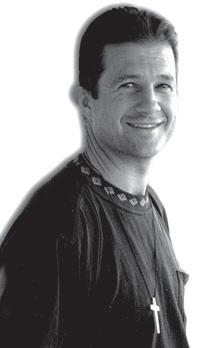 ■ With Mark Reidy
■ With Mark Reidy
In May 1994 South African photographer Kevin Carter captured the attention of the world. He was awarded the Pulitzer Prize for his photo of a vulture ominously stalking a starving Sudanese child who was desperately dragging herself to a United Nations food station.
The graphic portrayal drew a passionate response from around the world with people wanting to know what became of the little girl. Carter reluctantly admitted that he did not know as he had left the child on her tragic journey. He became the target of much anger and criticism. Why hadn’t he intervened? How could he have left her? People were incensed and demanded answers.
He became the modern day sinner thrown
at the feet of the world by a justice-seeking mob. With metaphorical stones in hand we wanted him to pay for his crime against humanity.
But, in essence, are we any different to Carter? As 16,000 children starve to death each day, each one of us must accept some responsibility.
We should envisage the figure of Jesus standing protectively over this condemned man. Each one of us should imagine Him looking directly into our eyes and hear Him speak to our hearts, “Let he who has never ignored the plight of one of my suffering children, cast the first stone.”
I wonder how many of us would hang our heads in shame and walk away? How many of us would be forced to ponder the luxuries we have pampered ourselves with as a child slumps dead to the ground every five seconds? Of the excesses we surround ourselves with while blocking out the incessant torment of a forgotten people? I wonder how many of us would drop our stones of self-righteousness?
Carter had spent his professional life obedient to the journalistic principle of, ‘observe, but don’t engage.’ With communication networks reaching more people than ever before, it seems that many of us have adopted a similar mindset. Carter’s story is a tragic one. Within two months of collecting the ultimate prize in journalism, he had killed himself. But we must never forget the disturbing

image that is his legacy to humanity. It should remind us all that while we choose to ignore the tragedies that are ravaging millions of lives, we are no less culpable in our hearts than he was.
Each time we tell ourselves that there is nothing we can do or that the problem is too great, we allow a vulture to take another step closer.
Take this picture to a quiet place and pray. If your heart has been desensitised by the
never-ending flood of human tragedy that is thrust before us each day, then ask God to once more give you a heart of compassion.
Meditate on the photo and reflect on God’s Word, “ For he who does not love his brother whom he has seen, cannot love God whom he has not seen” (1 John 4:20).
Then ask God for guidance in what He would want you to do.
responses: reidyrec@iinet.net.au
Priests of Christ’s passion will help us face our own
The Catholic Church has always had to fight to a greater or lesser extent to assert the objective truth of her doctrines, and never more so perhaps than today. In a climate of subjective morality, where one’s own feeling is the sole arbiter of conduct, the Church’s insistent voice still proclaims that there are objective moral truths that are always binding in every situation. One of these objective moral truths is the inalienable right of each person to life, from conception to natural death.
For years we have lived with the unspeakable tragedy and scandal of ‘therapeutic’ abortion. But more and more cases are coming to public notice where an elderly or sick person’s life has been shortened by deliberate overdosing with sedative or pain relieving drugs, or by
Catherine Parish
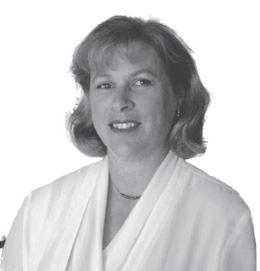
withholding ordinary treatment for conditions such as pneumonia. The decisions of the medical practitioners and nurses in these cases, with or without consultation with family members, all place the individual subjective judgement of those to whom care of the patient is given over the objective truth
of the patient’s right to life from conception to natural death. That these subjective personal judgements either to withhold ordinary treatment or to deliberately overmedicate happen with the apparent support of the hospital should be ringing very loud alarm bells for all of us. Anyone hoping to be treated in hospital as though their right to life was inviolable should now be thinking again.
We don’t need misguided attempts to make life easier for people by justifying some of these cases on the grounds that St Thomas Aquinas says circumstances modify responses in different situations. Yes, St Thomas Aquinas does indeed say this, but he goes on to say that this is possible only if a case is modifiable - which the inviolable right to life from conception to natural
death clearly is not. We don’t need life to be made easy, or to be told we can’t understand these complicated cases. What we do need is Catholics insisting that every person’s right to life from conception to natural death be respected not only in hospital mission statements but in fact. And we need, more than ever before, a holy priesthood. We need priests constantly to remind us of the reality of Christ, standing on his wounded feet with His wounded hands outstretched, with His pierced heart, calling us always, always, to be like him in everything, including bearing sometimes appalling suffering for His sake, sanctifying ourselves, our loved ones and the whole world through our sufferings united with His, whether we be the one ill or the ones watching. Isn’t this the whole meaning of His cru-
PANORAMA a roundup of events in the archdiocese
cifixion - not to change the physical conditions in a fallen world, but to cheat the devil by showing us how to turn around into a glorious triumph the awful things that happen in a fallen world, things that would ordinarily defeat us and drive us into despair.
We need priests to help prepare us to bear pain and suffering and difficulty by constantly reiterating the truth, the objective truth in its entirety, so that a lifetime of hearing and knowing the truth can help bear us up when these tragic times of suffering come upon us. We need priests to constantly remind us, to manifest the truth in their own lives, and to support us with prayer and the Sacraments and their strength and hope in Christ. We need the rock of truth, not the sand of subjective morality, to hold us up.
Tuesday May 2 – July 7
CROSSROADS COMMUNITY TERM 2
Tuesday May 2, 2006 until Friday July 7 for: Family & Friends Support Groups of Substance Abusers are on Wednesdays 7–9pm, Substance Abusers Support Groups are on Tuesdays 5.30 to 7.30pm & Fridays all-day Group for Substance Abusers is from 9.30am to 2pm including Healing Mass on Fridays @ 12.30pm during term. Rosary is from Tuesday to Thursday at 12.30 to 1pm.
May 6 - 26
RETREAT IN DAILY LIFE
CLC WA (Christian Life Community) is conducting a Retreat in Daily Life program in conjunction with the Australian Jesuit community. This year the retreat will commence on Saturday May 6. The retreat will be led by a visiting Jesuit, James Blaettler SJ together with a team of local spiritual Directors. This is a non-residential retreat experience ideally suited for those who need to continue their daily routine and obligations while still seeking to deepen their relationship with God. The retreat is conducted over 3 weeks, meetings with a Director occur twice weekly. For a brochure or more information contact Veronica Reutens (9310 1147) or Anne Zevis (9335 8142 email; zevises@bigpond.com).
May 6 – June 24
SEMINAR
The Holy Spirit of Freedom Community presents, “Empowered by the Holy Spirit for Living Today”. This is an 8 week Seminar which invites participants to see a new outpouring of the Holy Spirit in their lives. The course will run each Saturday from May 6 to June 24 from 10.30am to 12.30pm at St Anne’s Parish Hall, 11 Hehir St, Belmont. All Welcome. For further details contact 9475 0155.
Sunday May 7
FR DEETER’S SILVER JUBILEE CELEBRATIONS
Fr Tim Deeter, director of vocations discernment centre Casa Frassati and of liturgy and music at St Mary’s Cathedral, will be celebrating his silver jubilee on Sunday, May 7 at St Mary’s Cathedral. All are welcome to attend the 25th anniversary, which will begin with Mass at 5pm and be followed by refreshments at Mercedes College. For further information, call 9321 2822.
Sunday May 7
THE BOVE FARM MAY ROSARY RALLY
Celebration in Honour of Our Lady to be held at the Queen of the Holy Rosary Grotto, Bove’s Farm, Roy Road, Jindong. Hymn singing commences at 12.30pm. Holy concelebrated Mass led by Bishop Gerard Holohan commences 1pm, followed by
Rosary Procession and Benediction. Afternoon tea provided. All welcome! Bus bookings from Perth to Bove Farm can be made with Francis Williams on ph 9459 3873 or mob 0404 893 977. (Note: Roy Road runs off the Bussell Highway, halfway between Busselton and Margaret River).
Sunday May 7
DIVINE MERCY DEVOTIONS
Fr Douglas Hoare and the Santa Clara Parish Community welcome anyone from surrounding Parishes and beyond to the Santa Clara Church crn of Coolgardie and Pollock Streets, Bentley on the first Sunday of each month for devotions in honour of the Divine Mercy. The afternoon commences with the 3 o’clock prayer, followed by the Divine Mercy Chaplet, Reflection, and continues with benediction.
Sunday May 7
ETERNAL WORD TELEVISION NETWORK
ACCESS 31 FROM 1 2 PM
Alliance for Marriage Dr Matt Daniels with Fr Mitch Pacwa [EWTN Live]. With thanks to Fr Geoff Beyer, Parish Priest of St Joseph Pignatelli Parish, Attadale, for his sponsorship. Don’t miss this informative program about the attack on marriage and family in contemporary society. This is an international problem, and we in Australia cannot afford to be
complacent. Postal address: The Rosary Christian Tutorial Association, PO Box 1270, Booragoon 6954. Enquiries 9330 1170.
Monday May 8
MONTHLY MASS IN HONOUR OF BLESSED MARY MACKILLOP.
6pm at Sisters of St Joseph’s Chapel, 16 York Street, South Perth. Everyone welcome to come and pray and kneel at Mary MacKillop’s shrine. Australia’s First Saint will listen to your prayer. Enquiries Sister Maree Riddler 0414 683 926.
Monday May 8
ALPHA DINNER
Glendalough at 6pm, Invite a non-Christian friend to learn about life and God by attending a 10 week program. Sponsored by St. Bernadette’s Parish. Call for more information - Pam 9245 4959.
Tuesday May 9
CAFE AT JOHN PAUL
Module Three of the successful CaFE - Catholic Faith Exploration - series, entitled Knowing God Even Better will begin at the John Paul Church hall, Willetton. The five-talk video series, presented by the inspirational David Payne, Director of Catholic Evangelisation Services, UK will be held every Tuesday up to June 6 from 7.30pm - 9pm. Sessions
Page 14 May 4 2006, The Record
@
home
i say, i say
Tragedy: This is the photo that won Kevin Carter a Pulitzer Prize. Outrage followed when it was discovered he had left the girl to her death. But, writes Mark Reidy, we should be careful of judging.
BUILDING TRADES
■ BRICK REPOINTING
Phone Nigel 9242 2952.
■ PERROTT PAINTING PTY LTD
For all your residential, commercial painting requirements. Phone Tom Perrott 9444 1200.
■ PICASSO PAINTING
Top service. Phone 0419 915 836, fax 9345 0505.
CATHOLICS CORNER
■ RETAILER OF CATHOLIC PRODUCTS
Specialising in gifts, cards and apparel for baptism, communion and confirmation. Ph: 9456 1777. Shop 12, 64-66 Bannister Road, Canning Vale. Open Mon-Sat.
CHANGE YOUR LIFE FOREVER
■ WORK FROM HOME
Around your children & family commitments. My business is expanding and I need people to open new areas all over Australia. Training given. Highly lucrative. www.cyber-success-4u.org
FURNITURE REMOVAL
■ ALL AREAS
Mike Murphy 0416 226 434.
HOLIDAY ACCOMMODATION
■ DENMARK
Holiday House 3bdr x 2bath, sleeps up to 8. BOOK NOW. Ph: Maria 0412 083 377.
■ SHOALWATER
Holiday units, self-contained, sleep up to 6, walk to the beach, near Penguin Island, very affordable rates. Bookings Ph: 0414 204 638 or bluewaterholidayunits@dodo.com.au.
HOUSESITTER
■ HOUSESITTER REQUIRED 34 MONTHS Dunsborough area. Close to Catholic Church. Need to love cat, walk dog, own transport and police clearance. June/July-end Sept. ph: 0427 553 434.
PAINTINGS
■ PAINTINGS
Wide range of secular and Christian paintings and art works. Tel: 9358 1886.
RELIGIOUS PRODUCTS
■ HUMBLE MESSENGER
Shop 16/80 Barrack St (Inside Bon Marche Arcade) Perth WA 6000. Trading Hours: MondayClosed,Tues-Fri-10am-5pm, Sat-10am-3pm, Ph/ Fax 9225 7199, 0421 131 716.
■ REPAIR YOUR LITURGICAL BOOKS
Tydewi Bindery offer handcrafted fine bindings, journals, leather recovering. Repairs fo all your books, liturgical, bibles, missals and statues. Ph. 9293 3092.
OFFICIAL DIARY
MAY
1-11 Australian Catholic Bishops’ Conference, Sydney - Archbishop Hickey, Bishop Sproxton
5 50th Anniversary of opening of St Maria Goretti’s School and Church, Redcliffe - Fr Brian O’Loughlin VG
9 Law Week Service, Cathedral of St Constantine and Helene - Fr Brian O’Loughlin VG
are conducted in a warm and friendly cafe setting, enabling you to deepen and share your faith with others over a cuppa or glass of wine, and nibbles. For further details or to register, please call the parish office at 9332 5992.
Tuesday May 9/16/17
WORKSHOPS
Catholic Mission will be conducting an evening workshop for the parents, relatives and sponsors of confirmandi entitled ‘Confirmation and the Call to Christian Witness’ at Our Lady of Mercy Parish, Girrawheen Tuesday May 9, Our Lady Help of Christians Parish, East Victoria Park on Tuesday May 16 and St Emilie’s Parish, Canning Vale on Wednesday May 17. For further information about these workshops contact the Catholic Mission Office on 9422 7933 or email us at catholicmissionp erth@bigpond.com.
Friday May 12
HEALING MASS GOD’S HEALING OF HIS PEOPLE Catholic Charismatic Renewal invites you to come and experience God’s healing of his people through Prayer and Praise, the Eucharist and Praying Over. This celebration will be held at Our Lady of Mt Carmel, Collick St, Hilton, commencing with Prayer and Praise at 7pm, Mass at 8pm followed by praying over and supper. We welcome all in the spirit of peace, healing and fellowship. Enq: Martha 0419 242 172.
Saturday May 13
FATIMA FEAST
The Portuguese Community will celebrate their annual Feast of Our Lady of Fatima on May 13, in the Basilica of St Patrick, at 7pm All are welcome.
Saturday May 13
REFLECTION: THE WORD OF LIFE
You are warmly invited to an Afternoon Reflection on the Word of Life, Saturday, May 13, 2006. Commencing 1.30pm at the L.J. Goody Bioethics Centre, (39 Jugan St Glendalough) for Rosary and Reflection. Followed by a short walk to St Bernadette’s Church, Glendalough (Leeder St, cnr Jugan St) for Adoration and Bendiction at 3pm. Concluding with Mass at 3.30pm celebrated by Fr Jim Shelton. Afternoon tea will be served at the Bioethics Centre. All Welcome! RSVP by May 10. Ring sister-in-Christ Rosa on 9378 3044 or Bernadette on 9275 7765.
Sunday May 14
MAKE POVERTY HISTORY
An evening to hear about and discuss issues of justice, equality, distribution of wealth and resources. An evening to reflect, discern and respond. Presented by Richard Mavo. At Floreat Parish Centre, 47 Peebles Rd, Floreat, from 5 to 8pm. Meal provided. Contact Br Bernard White on 0439 948 981, or bernard.white@westcourt.wa.edu.au
Sunday May 14
FATIMA HOLY HOUR “COULD YOU NOT WATCH ONE HOUR WITH ME”
The World Apostolate of Fatima will hold a holy hour in St Mary’s Church, Franklin St, Leederville on Sunday at 3pm. Please join us in making Eucharistic Reparation to Our Divine Lord. All are very welcome. Enq: 9339 2614.
May 19-21
MMP RETREAT
Annual Marian Retreat for Associates to be held at Sacred Heart College, Sorrento. Bookings essential. Ph 9341 8082 for details.
Sunday May 21
TAIZE PRAYER
We will be remembering Sister Irene McCormack (15th Anniversary of her death in Peru) in our Taize Prayer this month. We remember her life and her giftedness especially to the people of Peru. You are all invited to come with your friends and pray in a candlelit chapel in an atmosphere of peace and stillness. 7–8pm. Please bring along a torch. For more information contact Sister Maree Riddler 0414 683 926; email: mriddler@sosjwa.org.au
Monday May 22 CATECHESIS FOR ADULTS
It will be a chance for everybody to grow together in faith. It is not so much a question of learning, as of meeting Jesus Christ as our Saviour. Jesus says: Come to me, all you who labour and are overburdened, and I will give you rest. Many of us, both inside and outside the Church are confused, hurt, or just not happy. Many of us feel there must be more to life than this. Many are burdened by guilt and self-hatred. The Lord is coming in answer to the cry of your heart. The Church has a word of life, encouragement and joy for you. Mondays and Thursdays from May 22 and each week following at St Mary’s Cathedral Parish Centre 450 Hay Street Perth. For more enquiries contact Francesco Ceccarelli on 9384 0276.
RELIGIOUS PRODUCTS
■ RICH HARVEST YOUR CHRISTIAN SHOP
Looking for Bibles, CDs, books, cards, gifts, statues, baptism/communion apparel, religious vestments, etc? Visit us at, 39 Hulme Court (off McCoy St), Myaree, 9329 9889 (after 10.30am, Mon-Sat). We are here to serve.
THANK YOU
■ ST JUDE AND ST THERESE
Thank you for favours granted. Madora bay.
USFOROZ
■ MEMORIAL CARDS AND BOOKLETS
Urgent jobs in 24hrs. W/E and A/H 0410 651 900
Classifieds Phone Hotline 9227 7778 (Deadline 12pm Tuesdays)
12 Ordination to Priesthood, St Mary’s Cathedral - Archbishop Hickey, Bishop Sproxton
14 Candidacy for future deacons, St Mary’s Cathedral - Archbishop Hickey
14-19 Clergy Seminary - Archbishop Hickey
May 23 - 27
MARANATHA SCRIPTURE COURSE
THE GOSPEL OF ST MARK
St Lawrence Mary Immaculate Parish - Balcatta,
Tuesday evenings from 23 May - 27 June 7.30pm in the Alverna Parish Centre. Cost $30, enrolment essential. Enquiries Ricki di Biasi 9349 7361 or Luciana Bailey in Parish Office 9344 7066.
Tuesday May 30
MONICA & AUGUSTINE GROUP
The next meeting and prayer of the Monica & Augustine group will take place at St Thomas’ Parish hall, 2 College Rd, Claremont on Tuesday, May 30 at 7.30pm. Those attending are asked to bring a pen & writing paper or note book. Copies of the Prayer to St. Anne, Prayer for Wayward Children and A Prayer for Our Children, will be available. There will also be on sale copies of the beautifully illustrated book printed by Margaret Wilcox on some extracts of Augustine’s writings. There will be time for prayer and also supper, so please bring cake or biscuits to share. If you have not attended the earlier meetings, RSVP to Fr Brian O’Loughlin ph. 9384 0598 or email: claremont@perthcatholic.org.au
Saturday June 24 -26
NATIONAL CONFERENCE OF LAY PASTORAL MINISTERS.
Following the theme River of Life, Creating, empowering, renewing. A vibrant people of God. Registration forms can be downloaded from the Pastoral Ministers of Brisbane Website on www. catholic.net.au/layministry/pma. Interested persons can contact Margaret Walker 9390 8365 or Lesley McMinn on 9337 6295.
Saturdays PERPETUAL HELP NOVENA DEVOTIONS
Saturdays 4.30-5pm. Redemptorist Church, 190 Vincent Street, North Perth.
ART EXHIBITION
Art exhibition every Saturday and Sunday at the Parish Hall, Star of the Sea church, Cottesloe, cnr of Stirling Highway and McNeil Sts 11am – 4pm. All proceeds from the sale towards the extension of St Mary’s Cathedral, Perth.
ALCOHOLICS ANONYMOUS
Is alcohol costing you more than just money?
Alcoholics Anonymous can help. Ring 9325 3566.
BLESSED SACRAMENT ADORATION
Holy Family Church, Alcock Street, Maddington. Every Friday 8.30 am Holy Mass followed by Blessed
Please Note
Sacrament Adoration till 12 noon. Every first Friday of the month, anointing of the sick during Mass. Enq. 9398 6350.
PERPETUAL ADORATION AT ST BERNADETTE’S
Adoration: Chapel open all day and all night. All welcome, 49 Jugan St, Glendalough, just north of the city. Masses every night at 5.45pm Monday to Friday, 6.30pm, Saturday and the last Sunday Mass in Perth is at 7pm.
Wednesdays
SIGN LANGUAGE COURSE
Australian Sign Language (Auslan) Classes are offered free of charge at Emmanuel Centre on Wednesdays at 1pm. If this does not suit you, other arrangements can be made. Please contact Fr Paul or Barbara at Emmanuel Centre, 25 Windsor St Perth 9328 8113.
QUEEN OF APOSTLES SCHOOL
If anyone has information on Queen of Apostles School, Riverton, used to go there or knows anyone who did please do one of the following to tell the extension group – Call 9354 1360 and ask to speak to Veronique or email your information to veronequeregnard@gmail.com.au or janellekoh@yahoo.com.au or you can put your information into the box in the office at Queen of Apostles School. Thanking you in anticipation.
Sunday September 17
KOORDA CHURCH 50TH ANNIVERSARY
Our Lady of the Assumption Church at Koorda will celebrate its Golden Anniversary this year on September 17. Past Parish Priests and past parishioners are invited to come and join us for the celebrations. Anyone who has any photos they would like to include in a display is welcome to send them to Kath Gosper at PO Box 68, Koorda 6475. You could send copies or we will copy and return them to you. The day will commence with Mass at 10.30am to be followed by lunch at the Recreation hall.
LINDA’S HOUSE OF HOPE APPEAL
To enable us to continue to provide and offer support for girls wishing to leave the sex trade we need your help. We have achieved already with your assistance new offfices which are now complete at the rear of the shelter and are fully functional. Further donations are also required to enable us to complete the internal layout of the shelter itself. Please send donations to Linda’s House of Hope PO Box Z5640, Perth, St George’s Tce 6831. Ph: 0439 401 009. All donations over $2 are tax deductible.
The Record reserves the right to decline or modify any advertisment it considers improper or not in unison with the general display of the paper.
May 4 2006, The Record Page 15 Classifieds Classified ads: $3.30 per line incl. GST 24 hour Hotline 9227 7778 Deadline: 12pm Tuesday ADVERTISEMENTS
A Record SPECIAL event in conjunction with The University of Notre Dame Australia
De Coding The Art Of Da Vinci
Thursday May, pm
University of Notre Dame Drill Hall Mouat St, Fremantle
lecture by acclaimed Rennaissance art expert Dr Kate Challis - only WA appearance

When art historian Dr Kate Challis read the Da Vinci Code she said “author Dan Brown is extraordinarily skilled at blurring the lines between fact and fiction. In many ways, I think that the book is great, because it has aroused so much curiosity. On the other hand, I find it worrying that a lot of people simply chose to believe it lock, stock and barrel.”
Dr Challis spent more than 10 years conducting extensive research on Renaissance art and has lectured extensively in Australia, as well as the US and Europe. She will share her knowledge when she discusses The Da Vinci Code and its suppositions at a public lecture on Thursday 25 May 2006 at the University of Notre Dame Australia.
For her doctoral thesis she conducted research in some of the greatest libraries and art galleries throughout the world, including the Vatican. Her interest in art history was fostered at an early age by her grandfather, Professor Emeritus Bernard Smith, Australia’s pre-eminent art historian. Their shared passion for art and ideas still gives them lots to discuss and argue about, including The Da Vinci Code.
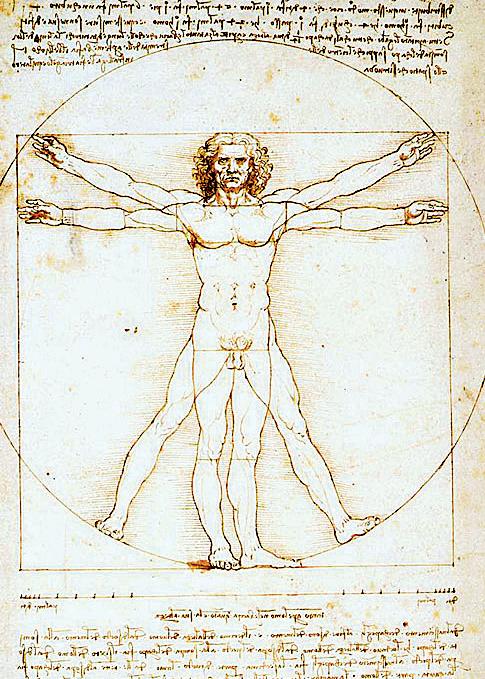
In a public presentation no art or literature lover could resist, Dr Challis answers many of the Da Vinci Code questions:
● Is it a woman in the Last Supper?
● Why didn’t Leonardo include a chalice?
● Who is the Mona Lisa and why is she smiling?
● What are some of the codes Dan Brown leaves for the reader to decode?
● Was Leonardo the grand master of the Priory of Sion?

● Was he involved with the cult of the sacred feminine? Kate has delivered this paper to packed audiences across Australia. It’s an experience that shouldn’t be missed.
PLUS: Richard Vella - ‘Demystifying Opus Dei’ Richard Vella is a Sydney-based spokesman for the personal prelature of Opus Dei Tickets available ONLY from The Record Ph: () Seating limited - Purchase yours now! Page 16 May 4 2006, The Record

















































 By Derek Boylen
By Derek Boylen





















 ■ With Mark Reidy
■ With Mark Reidy




